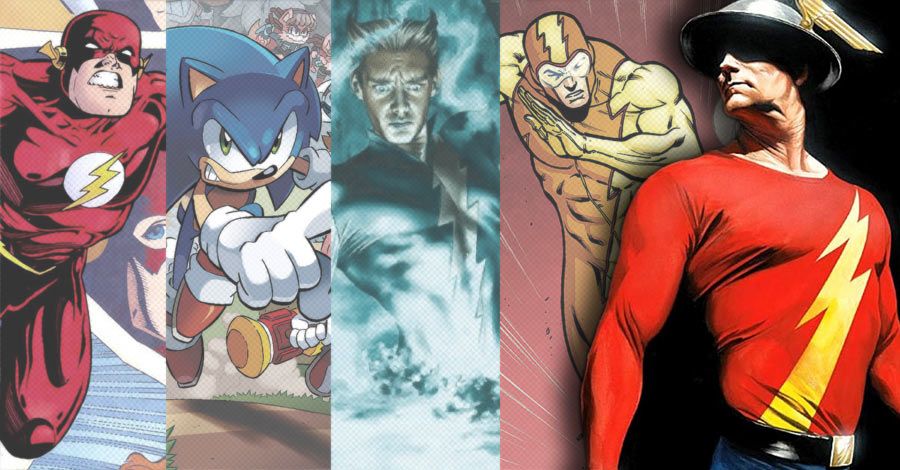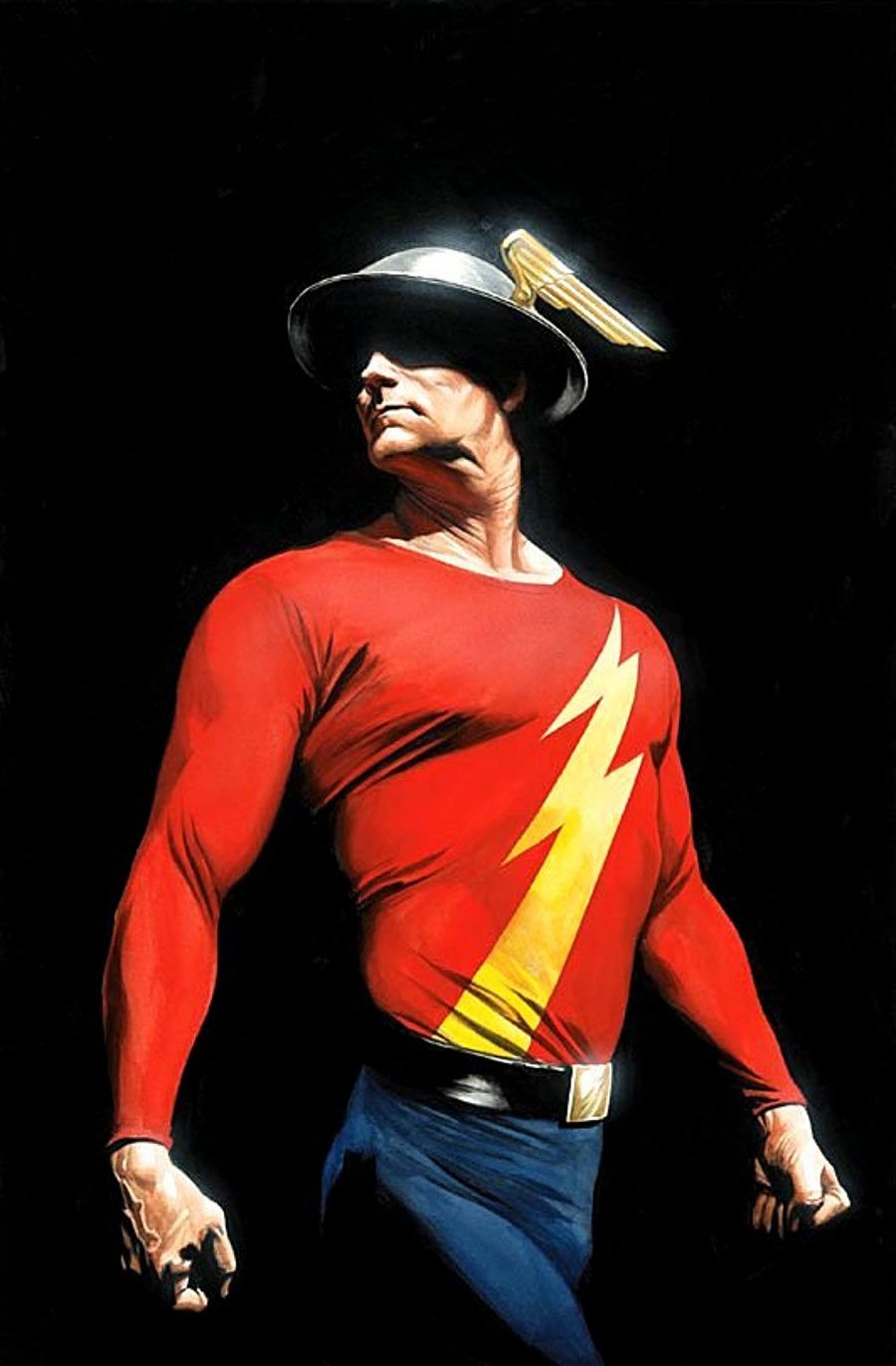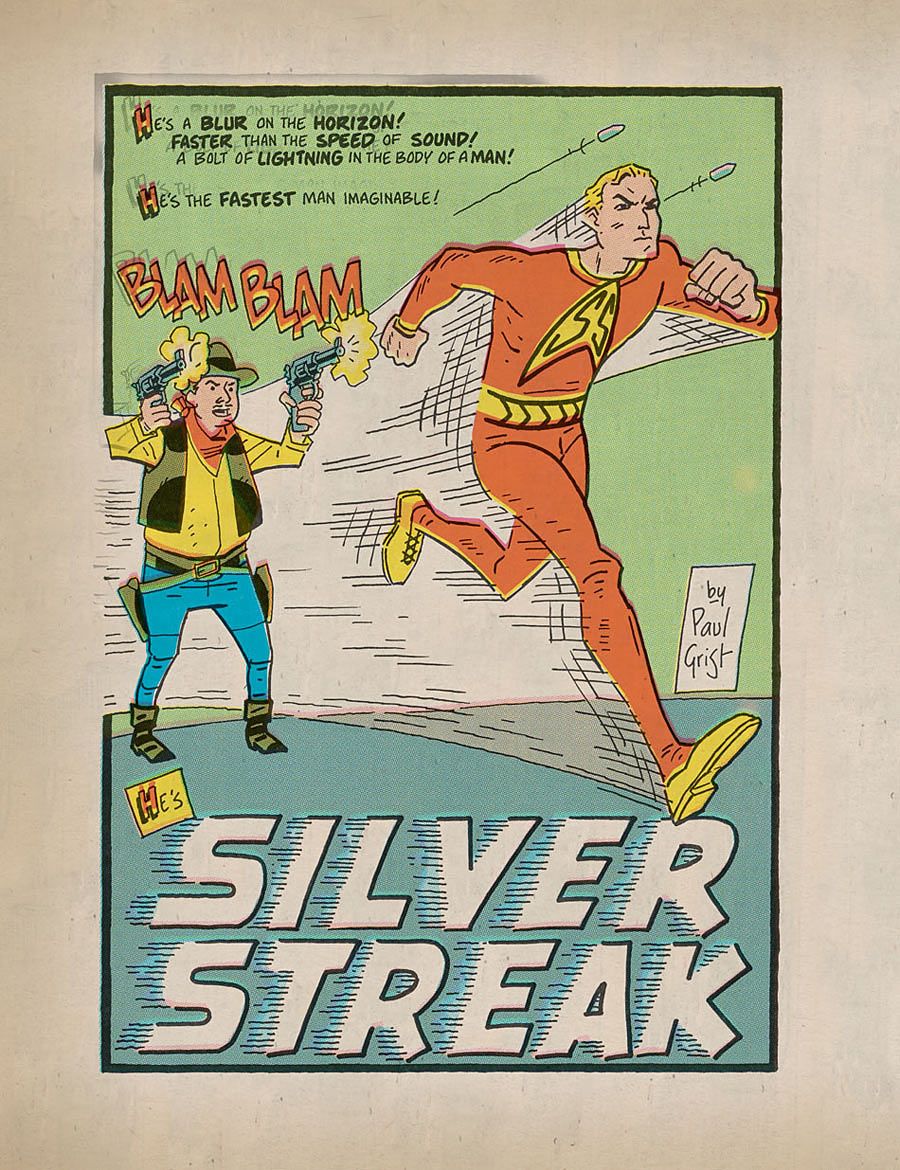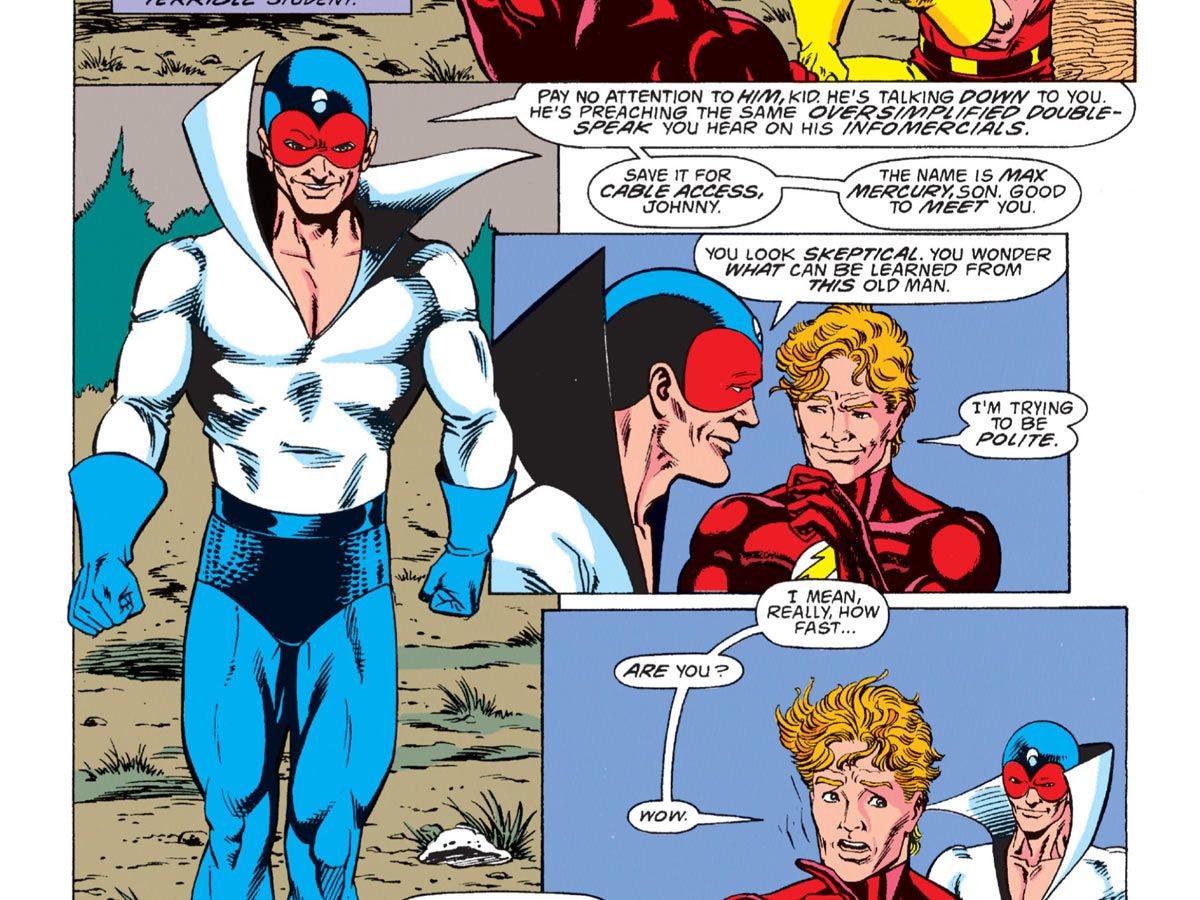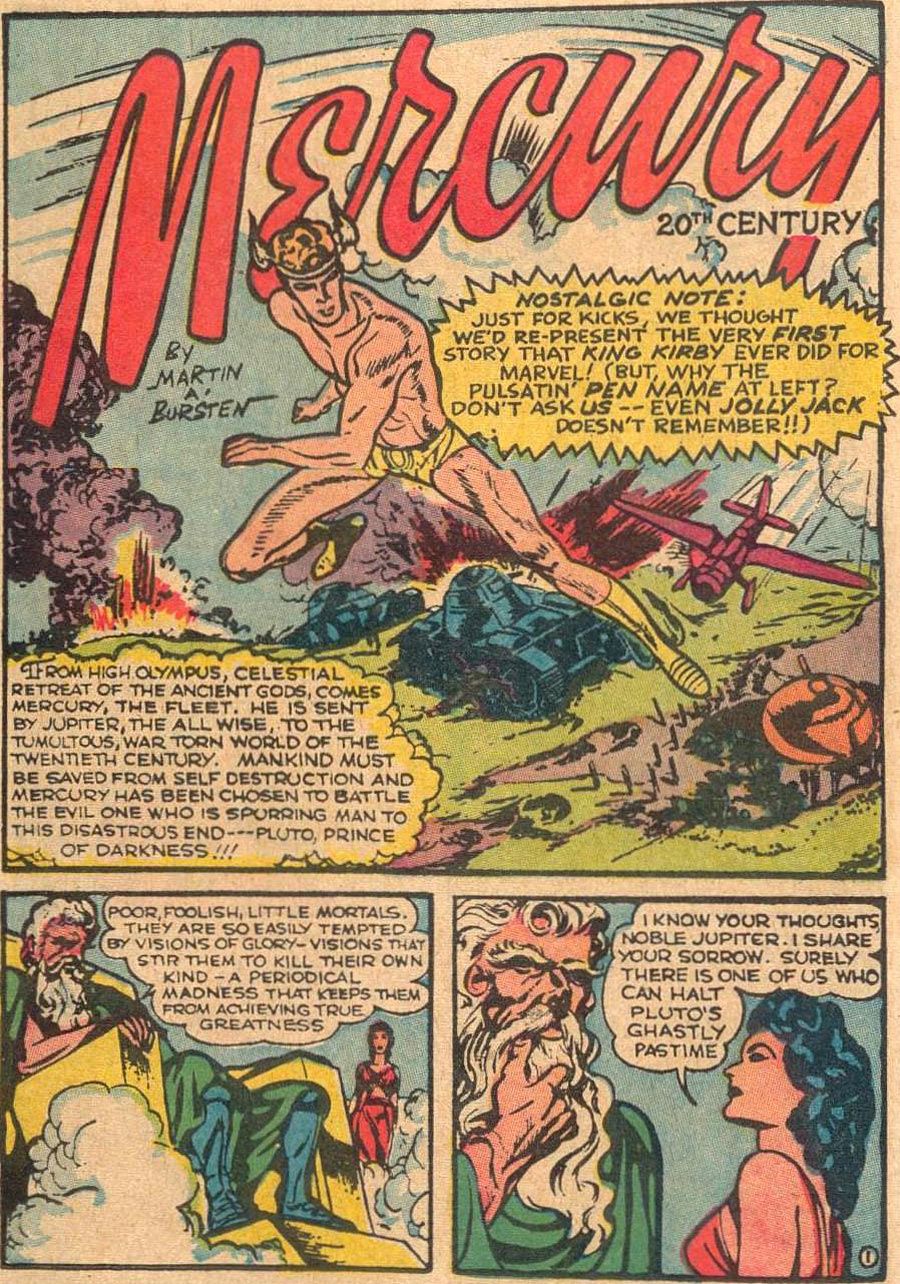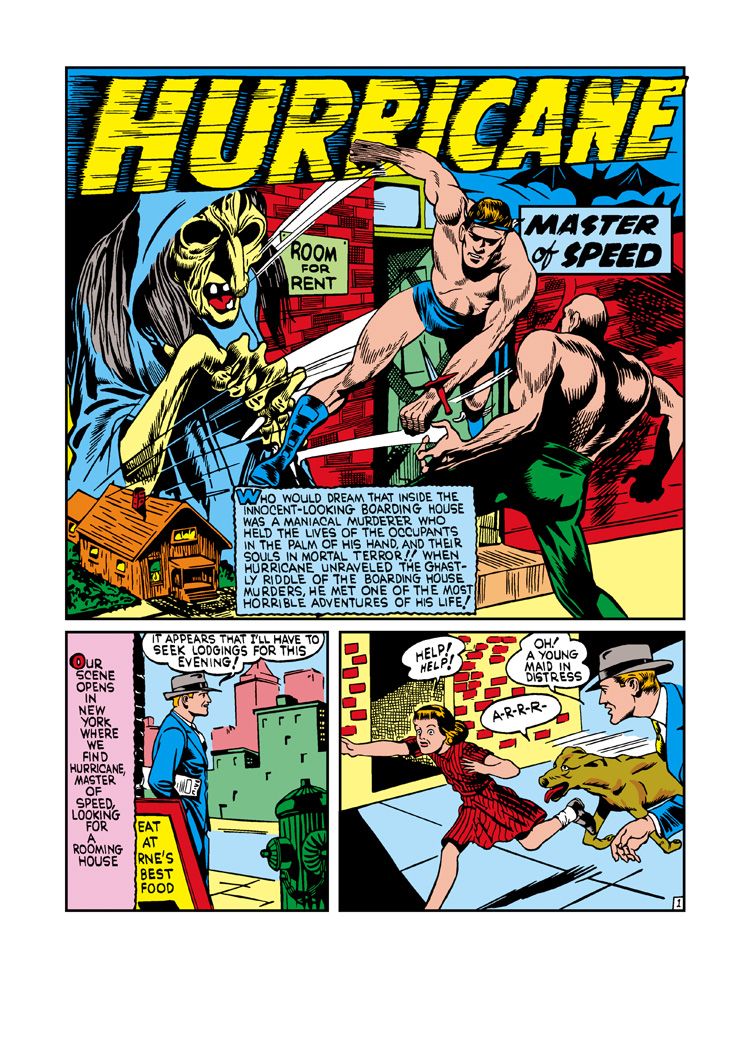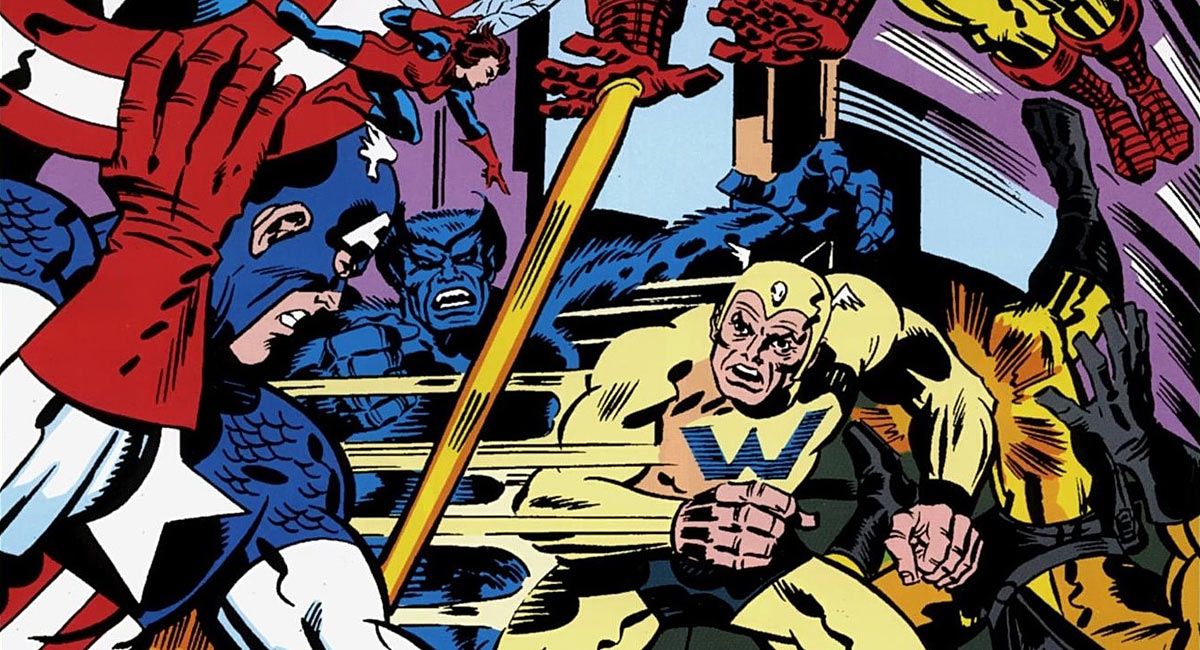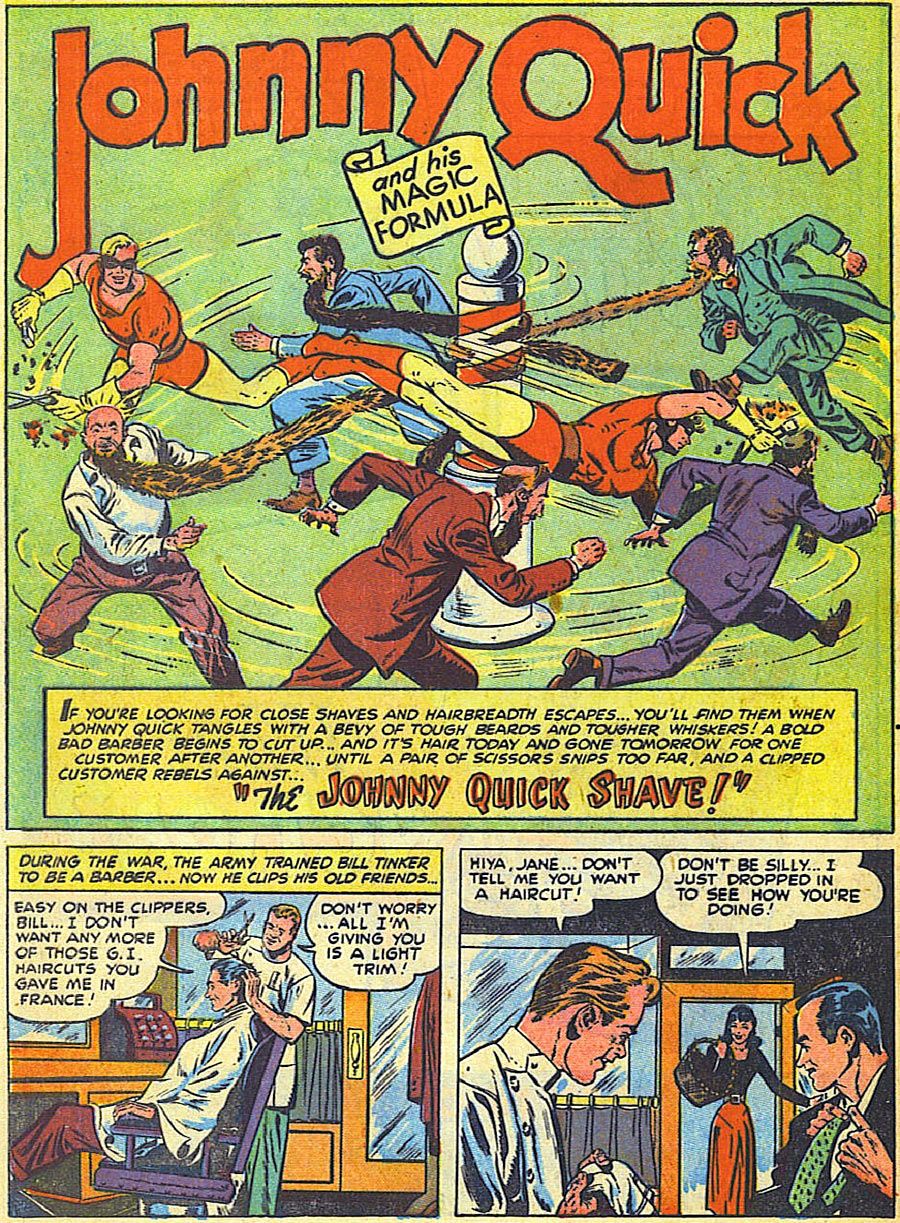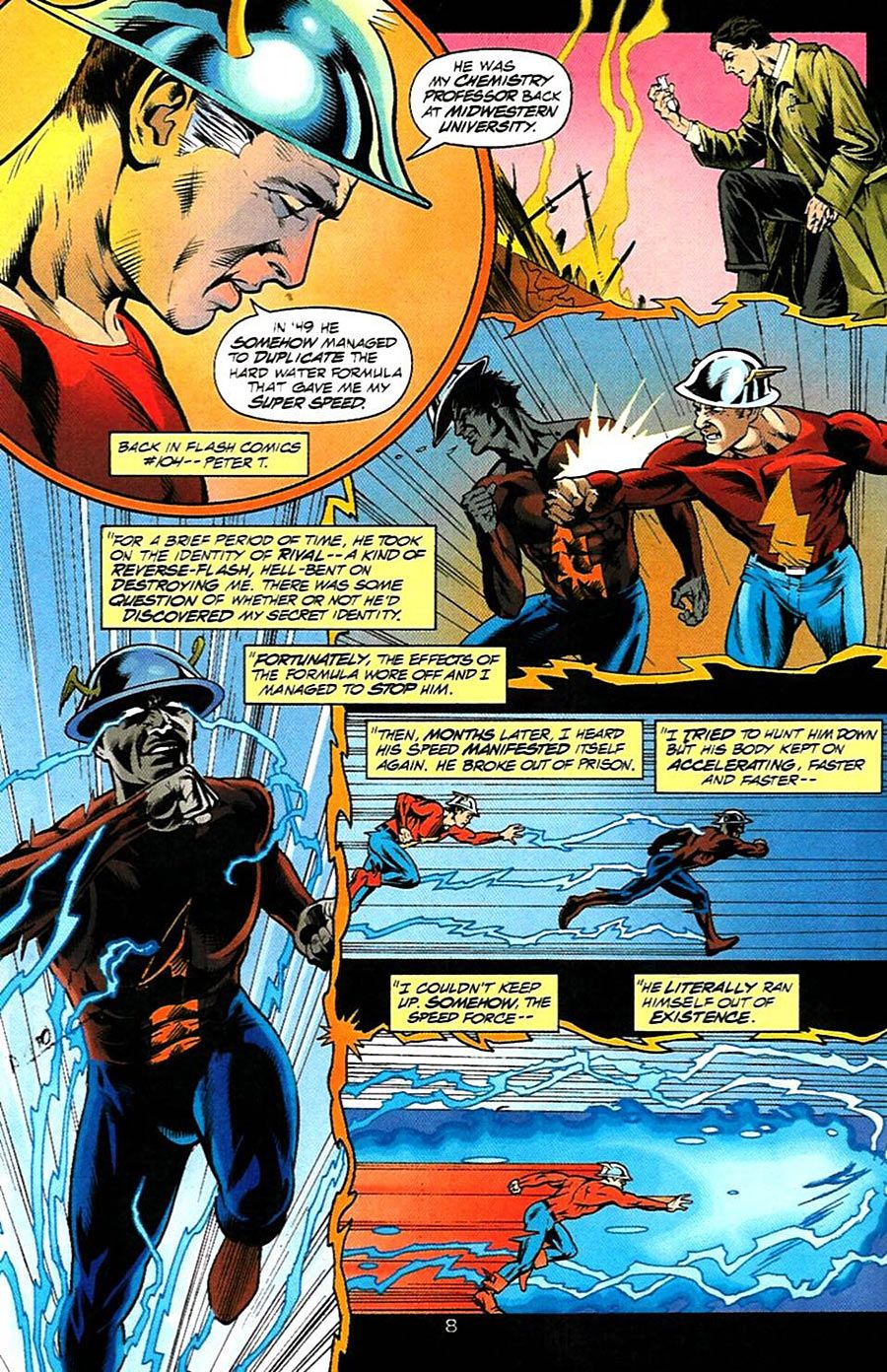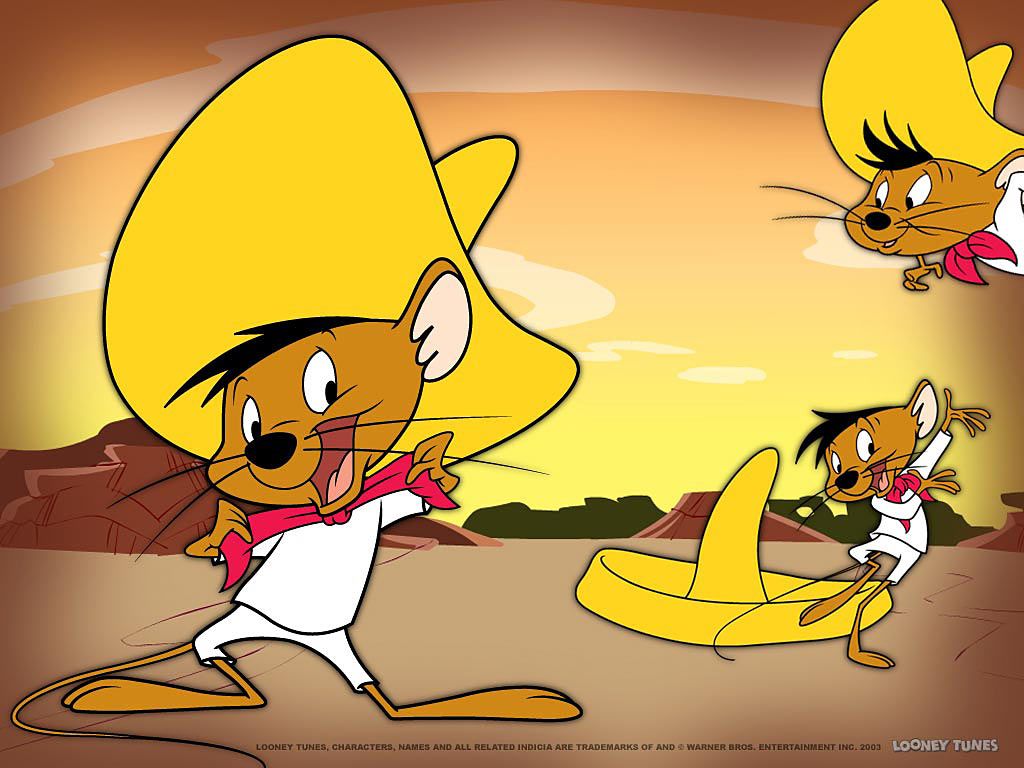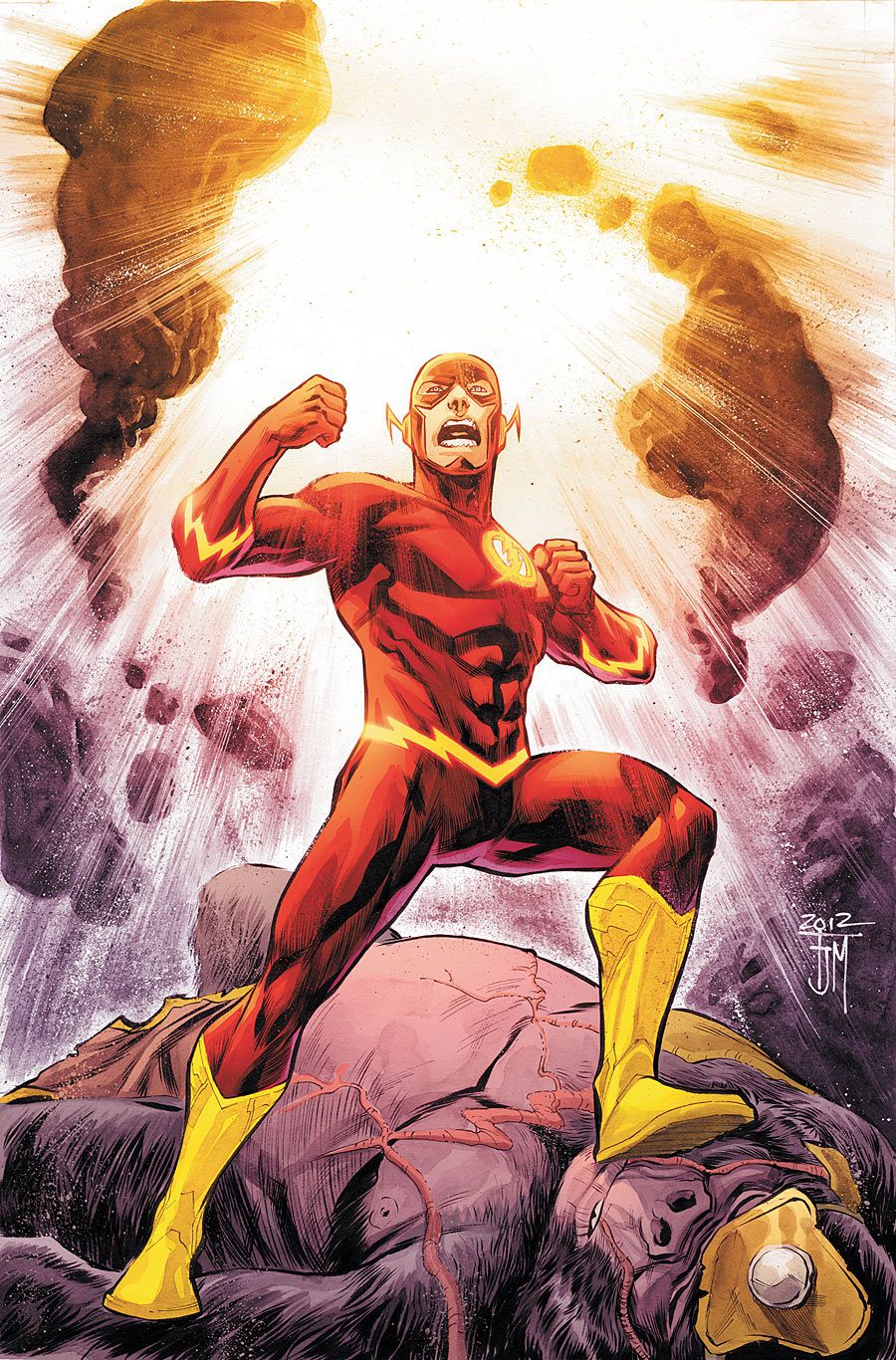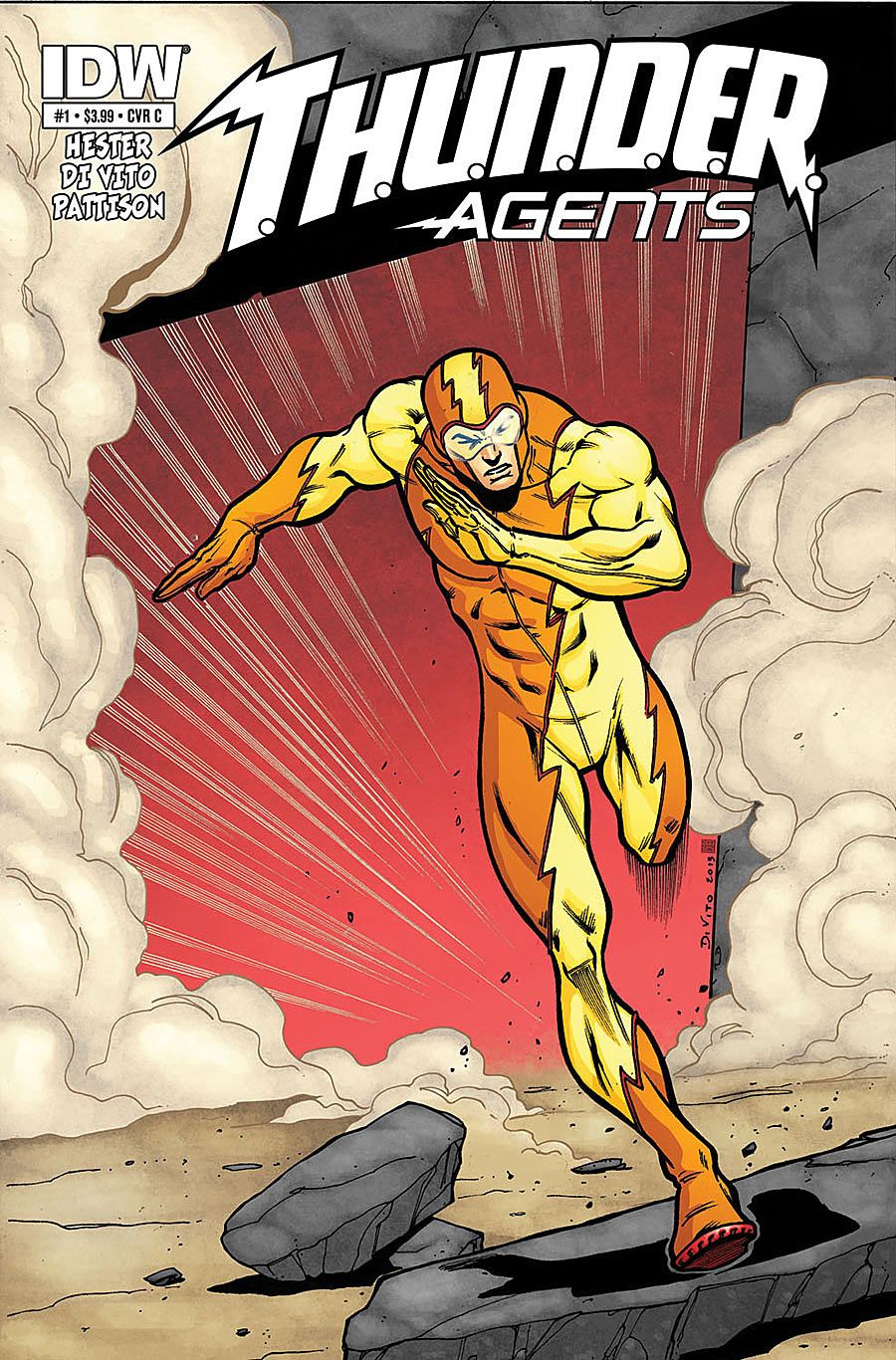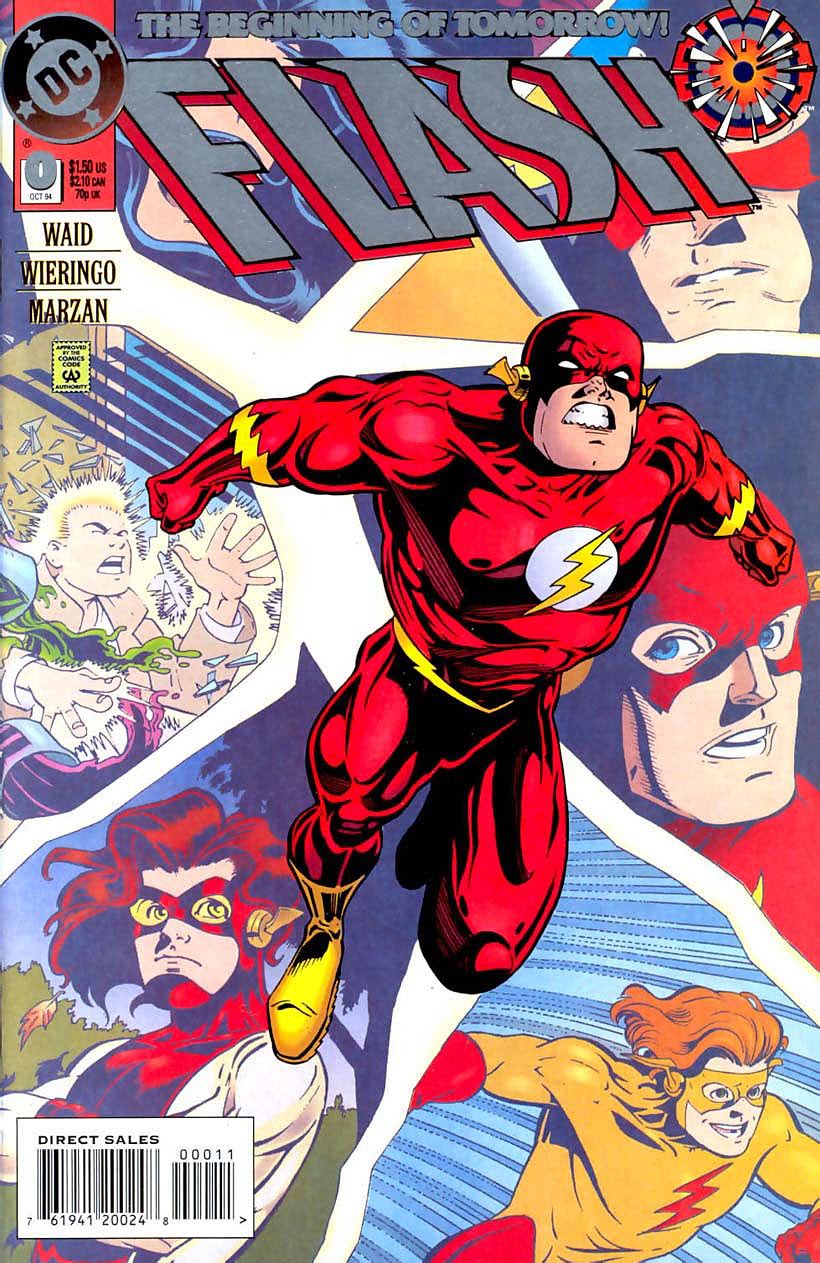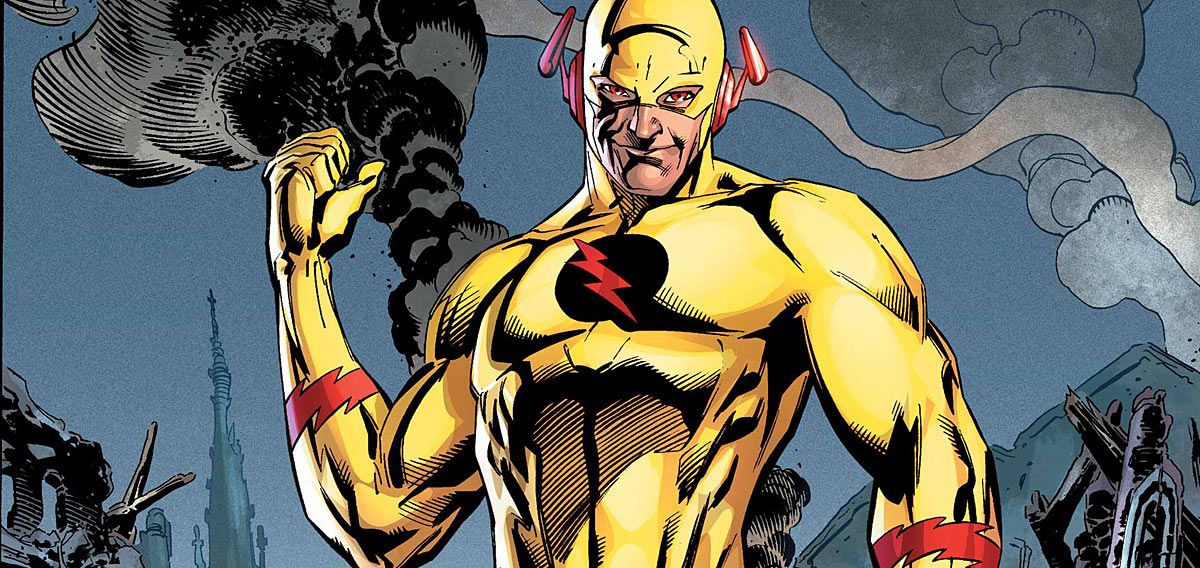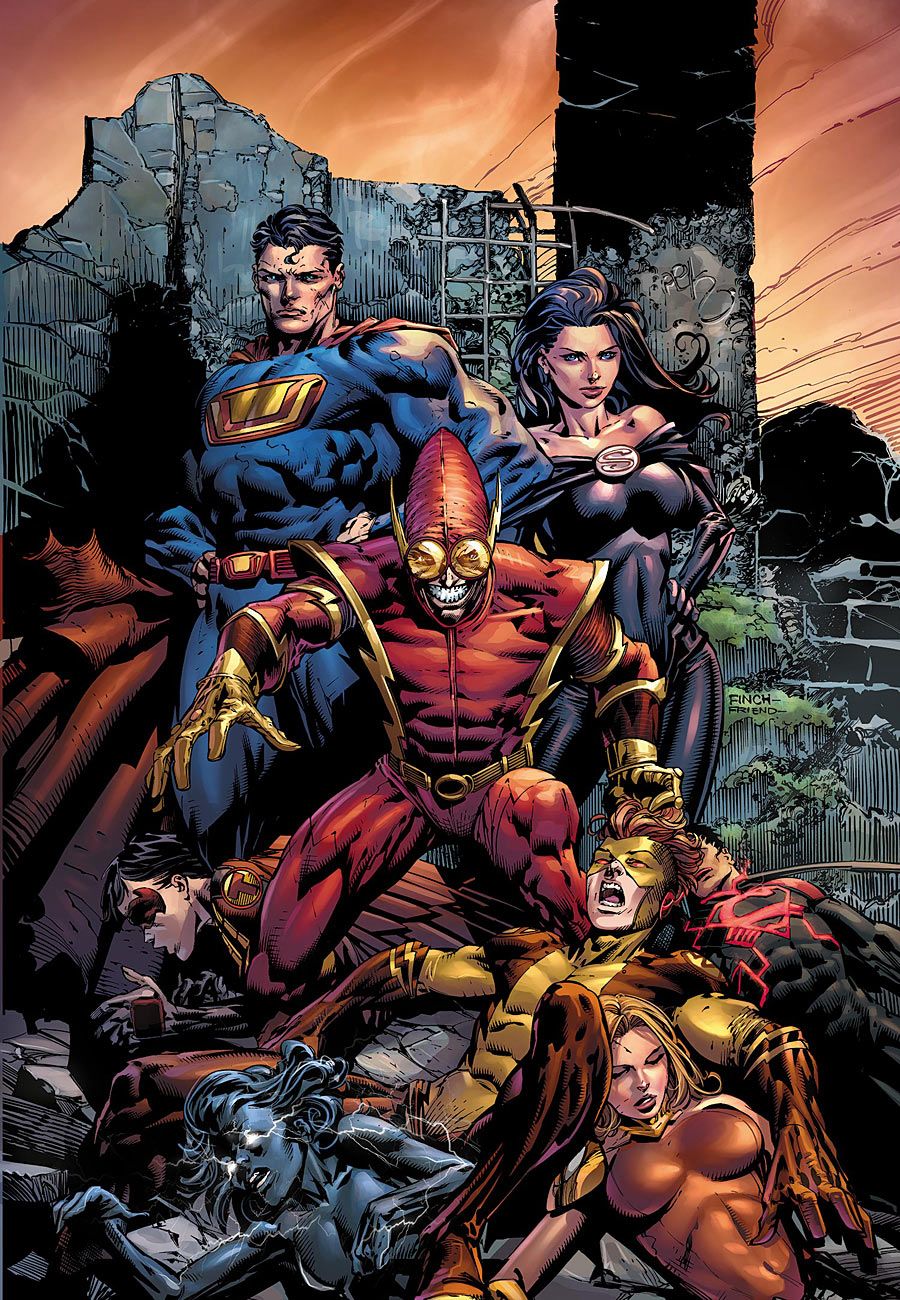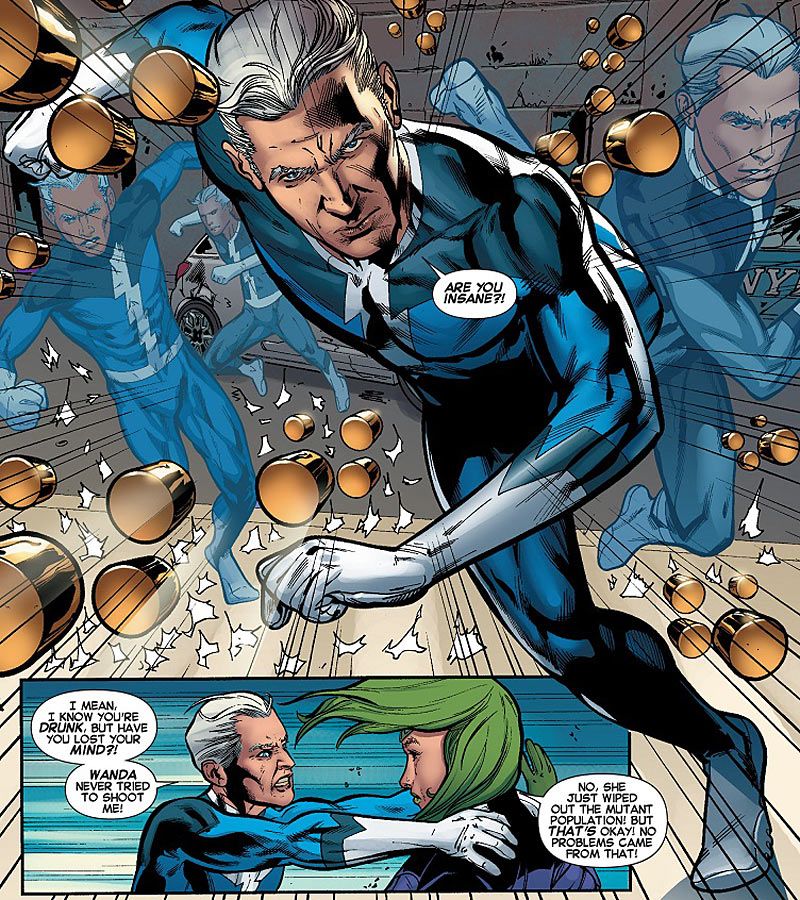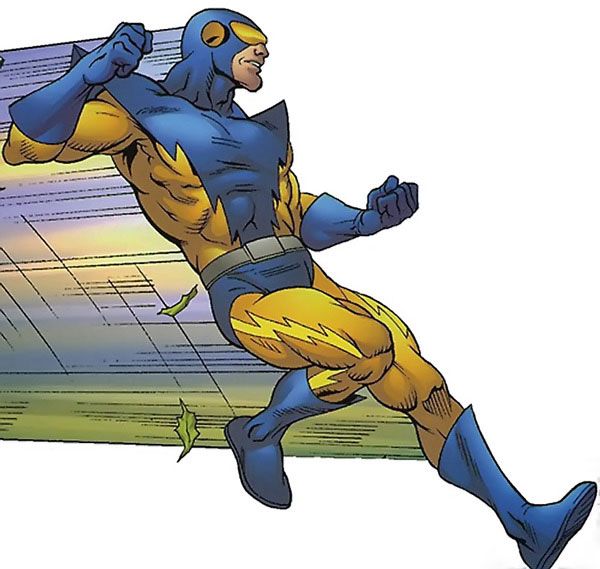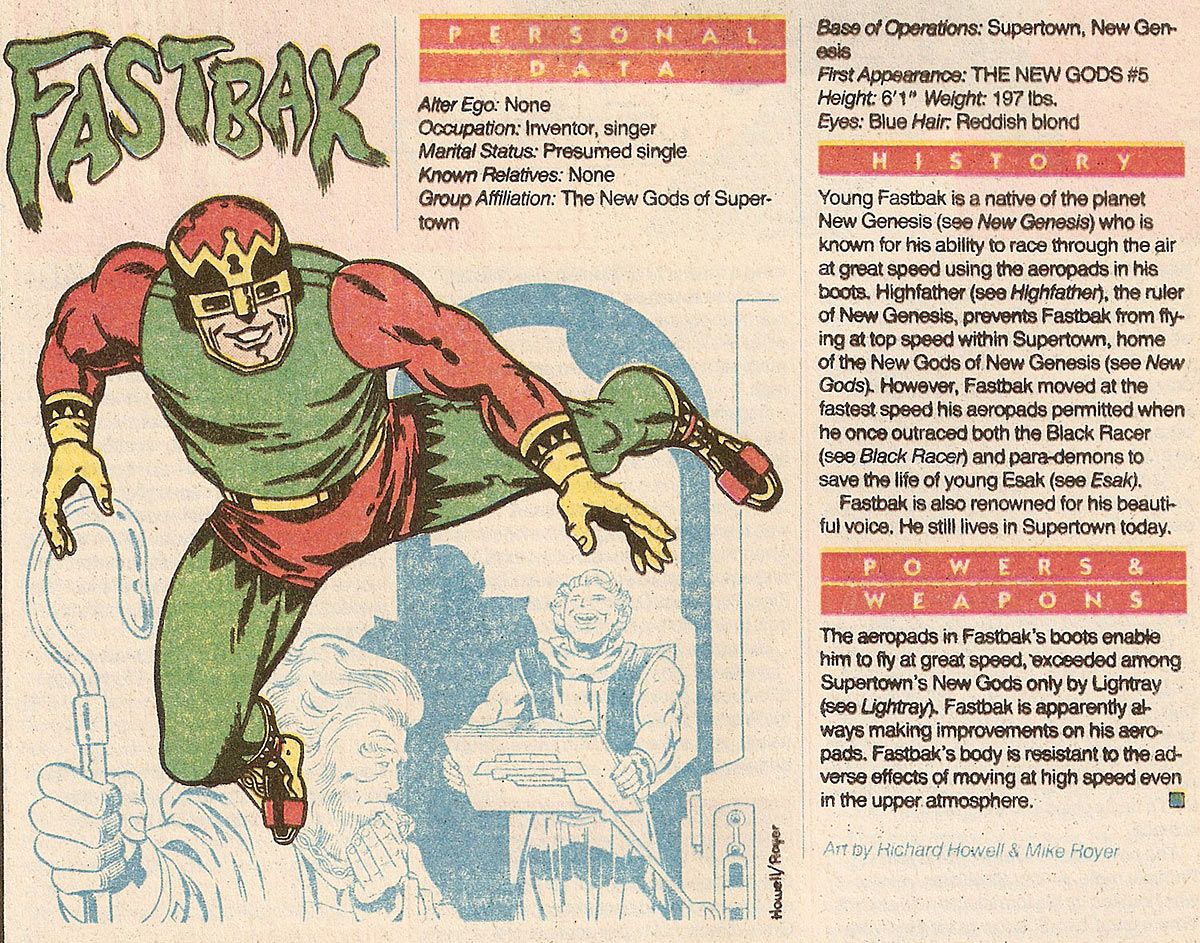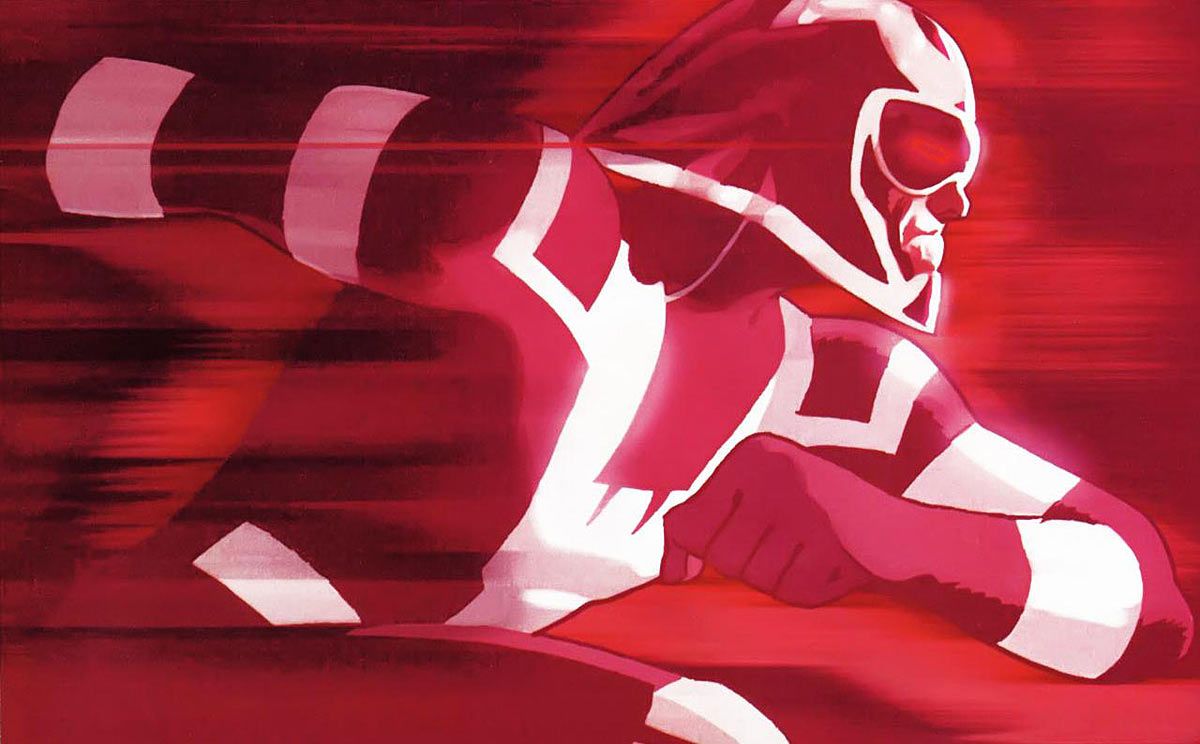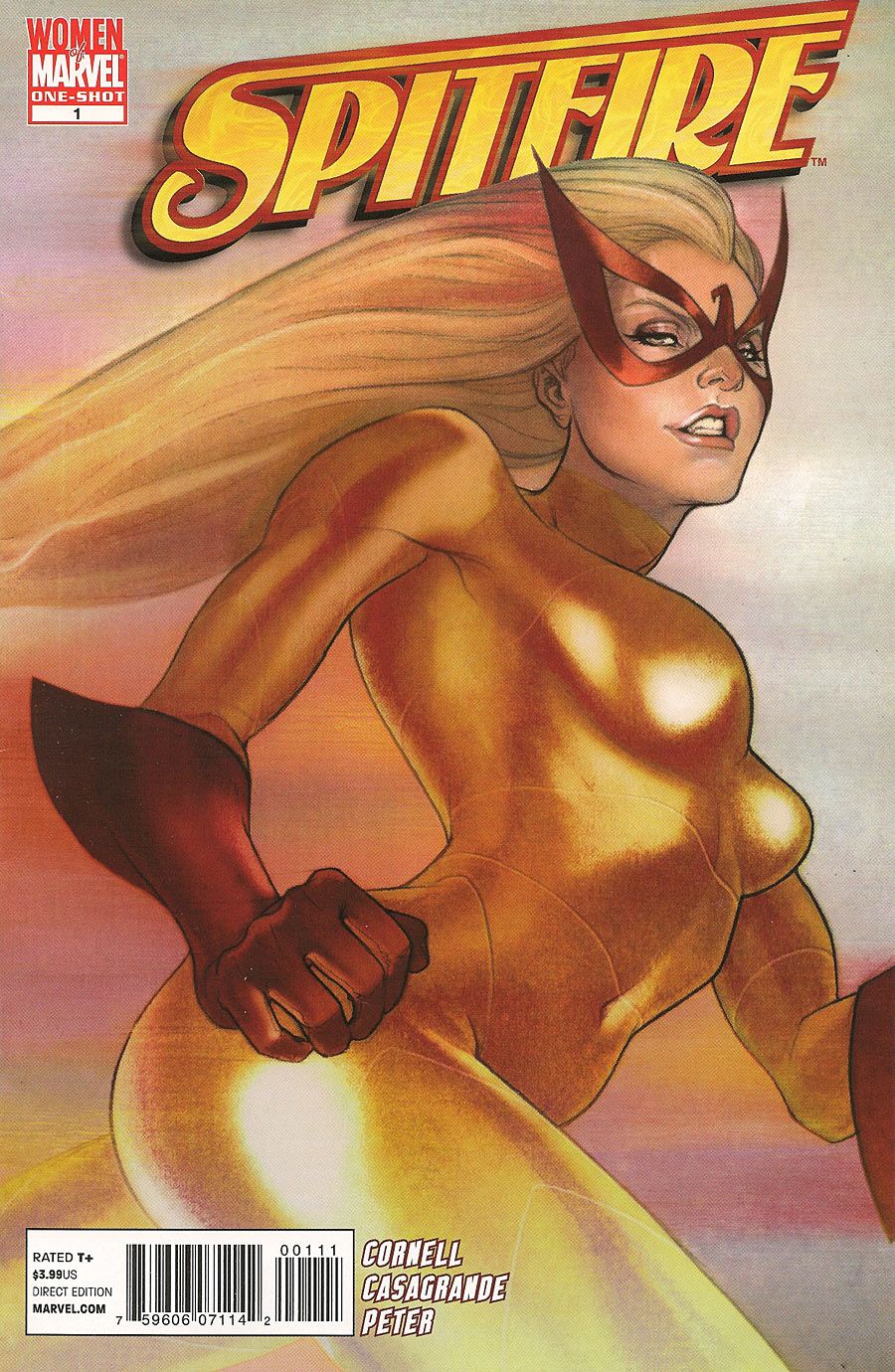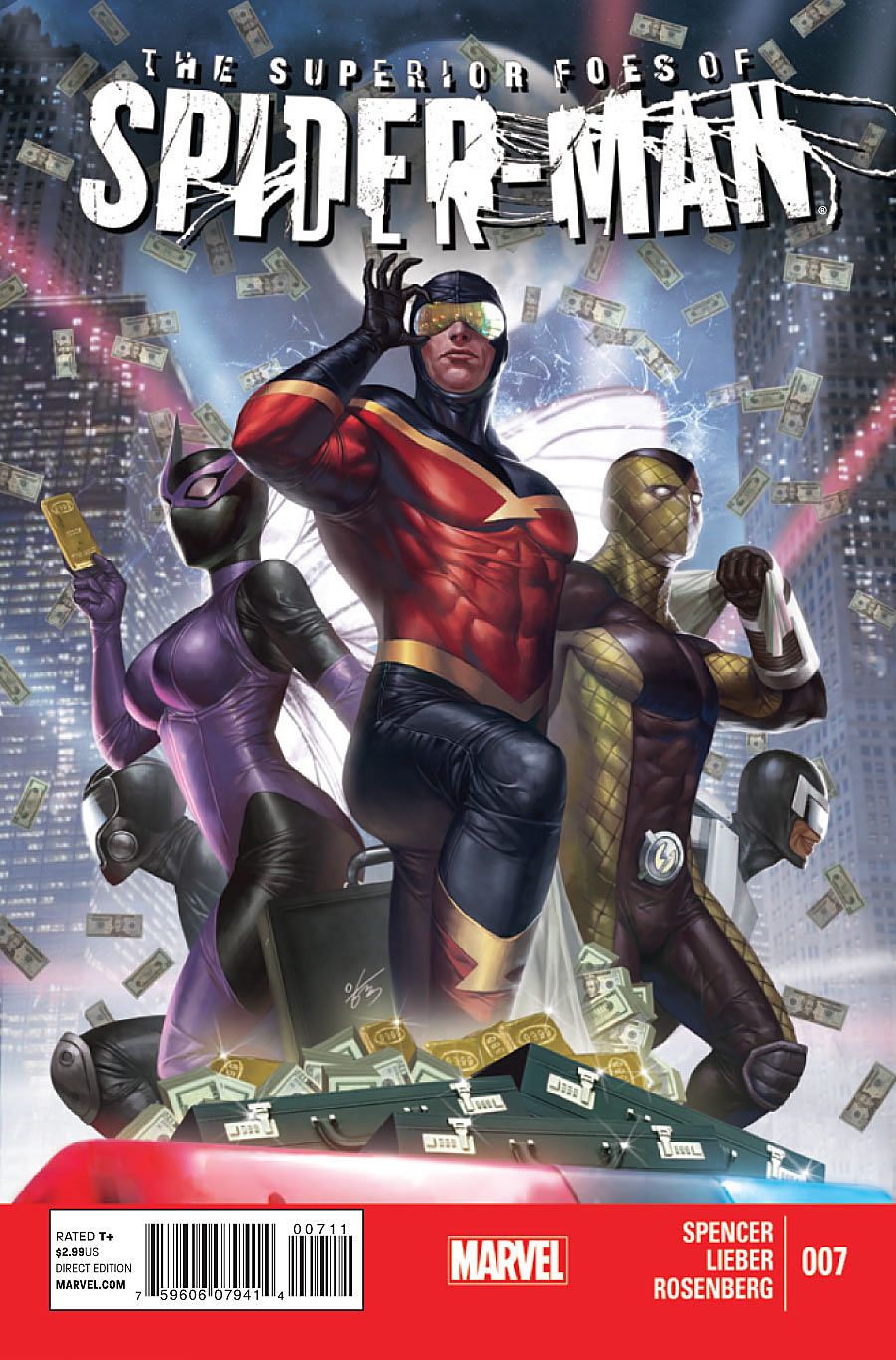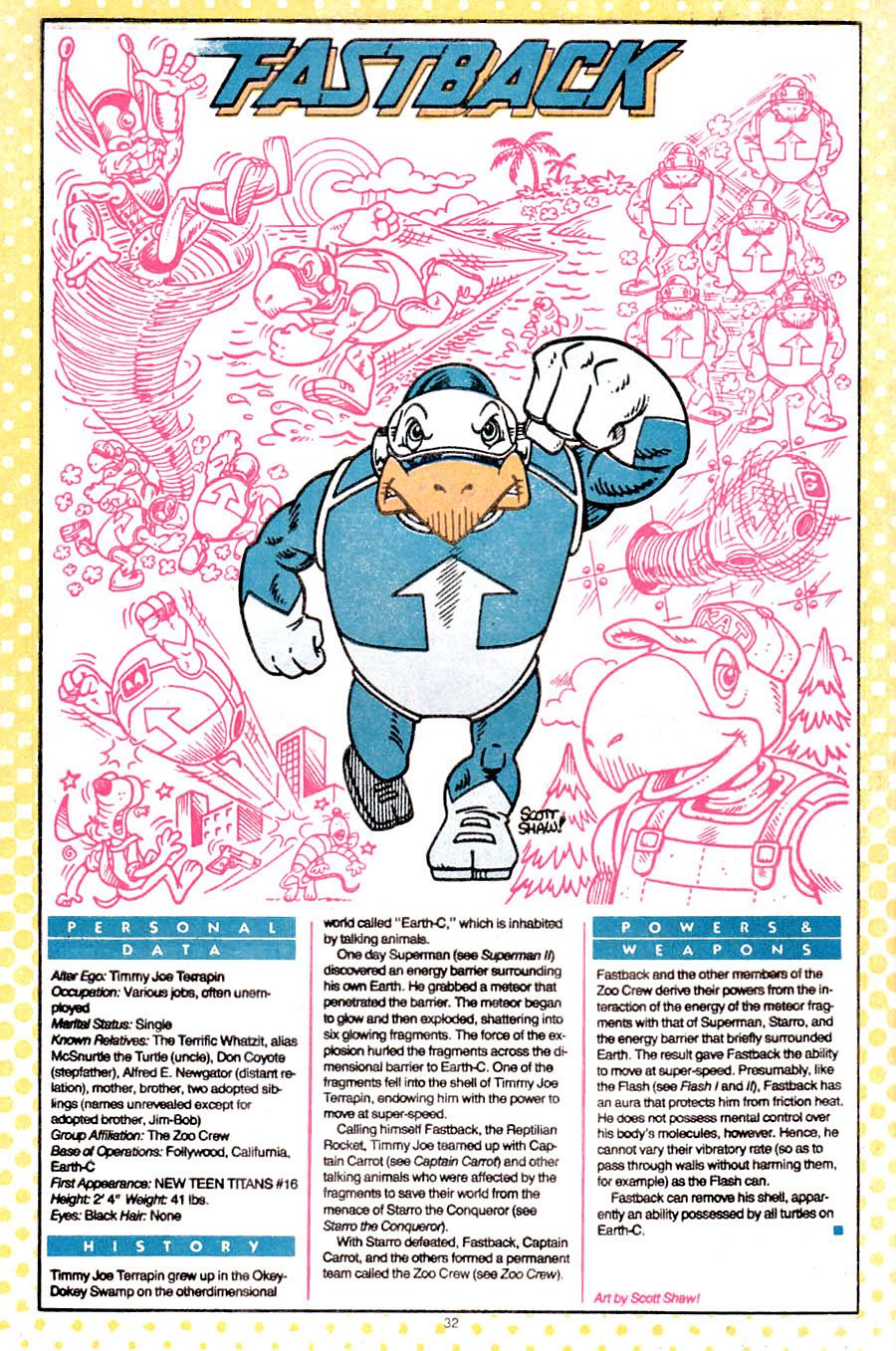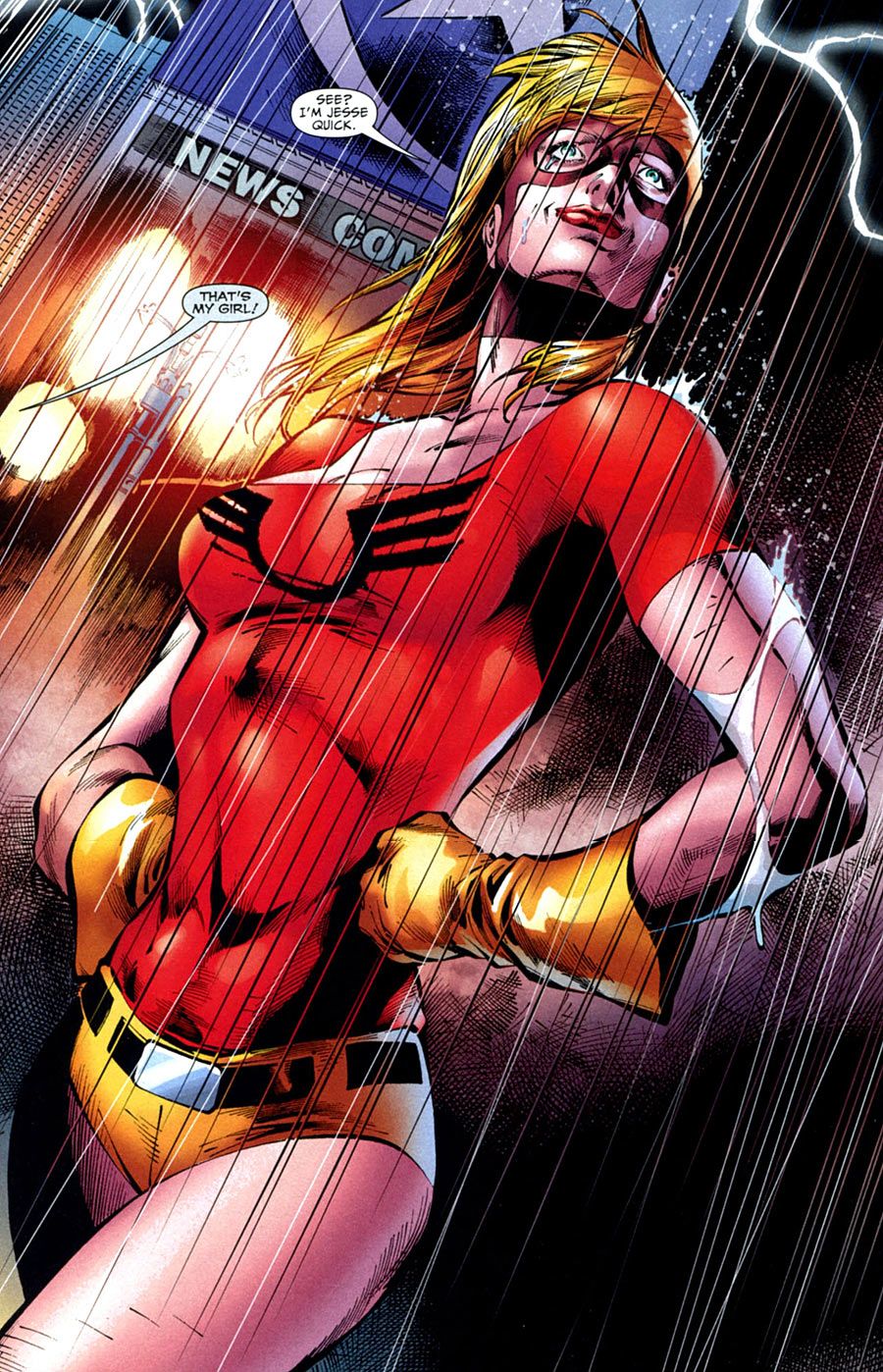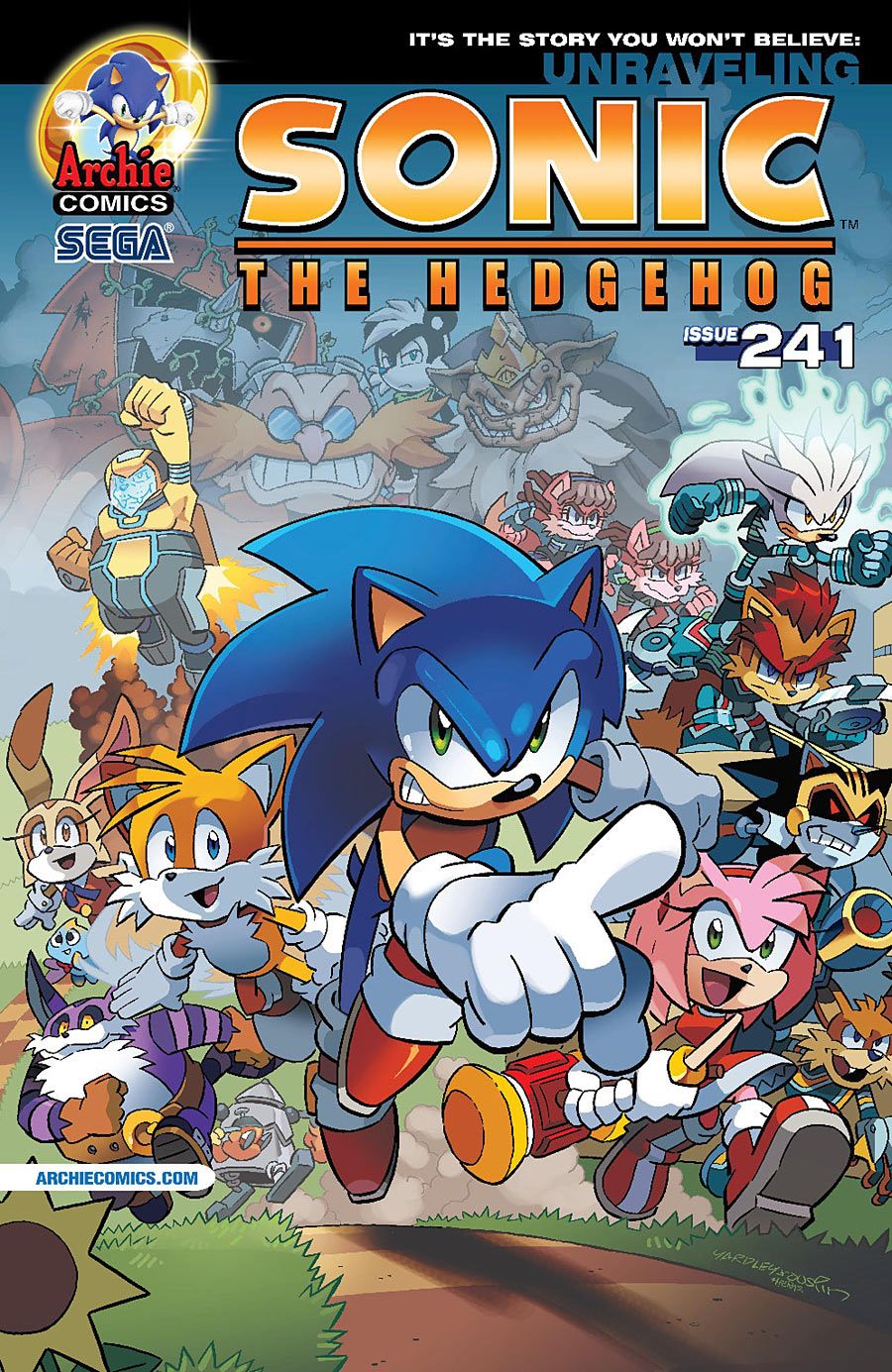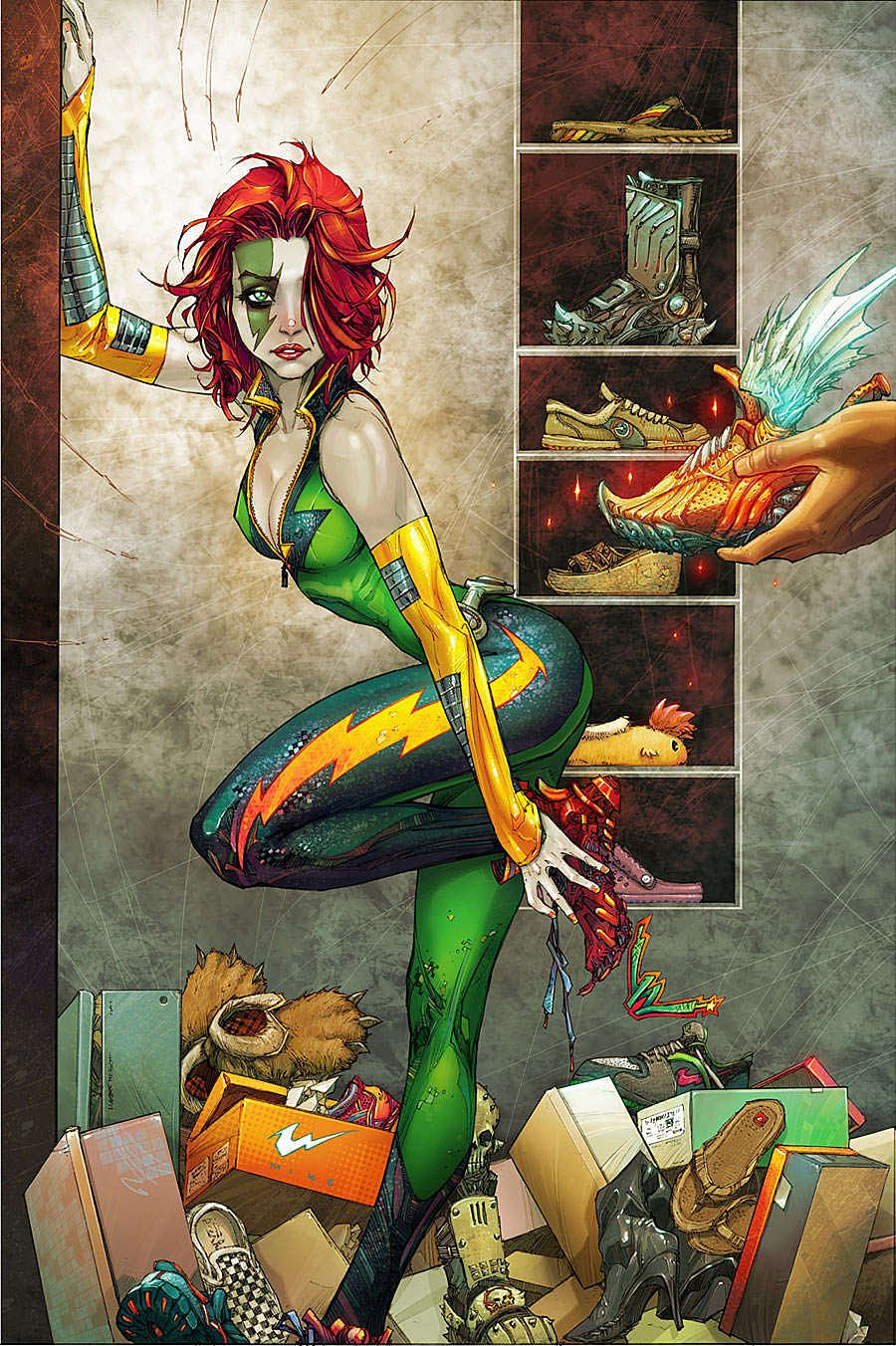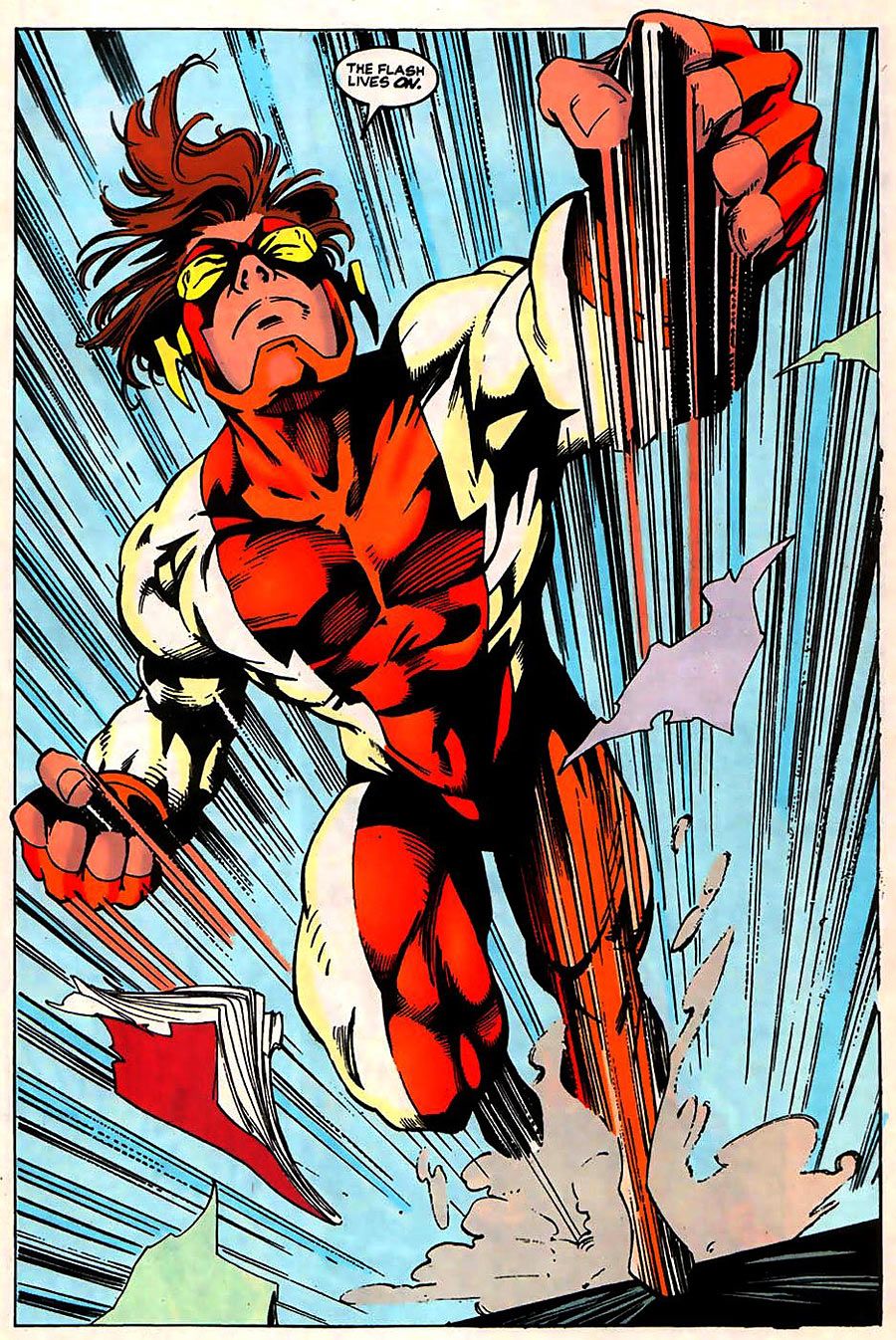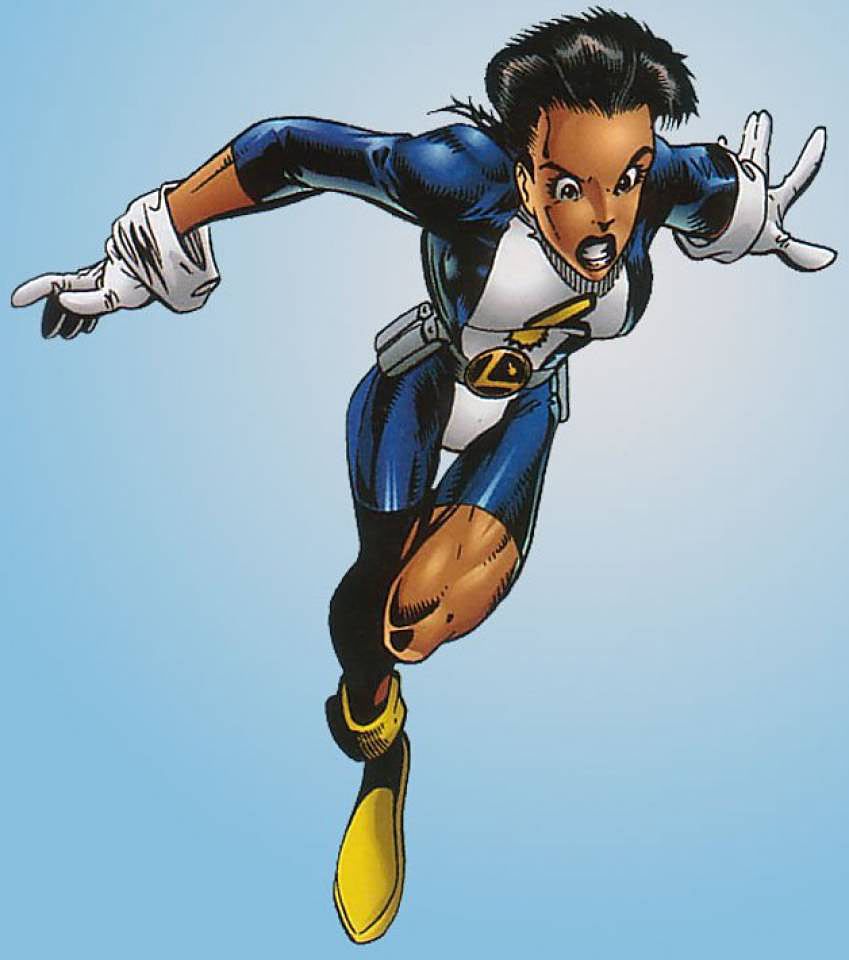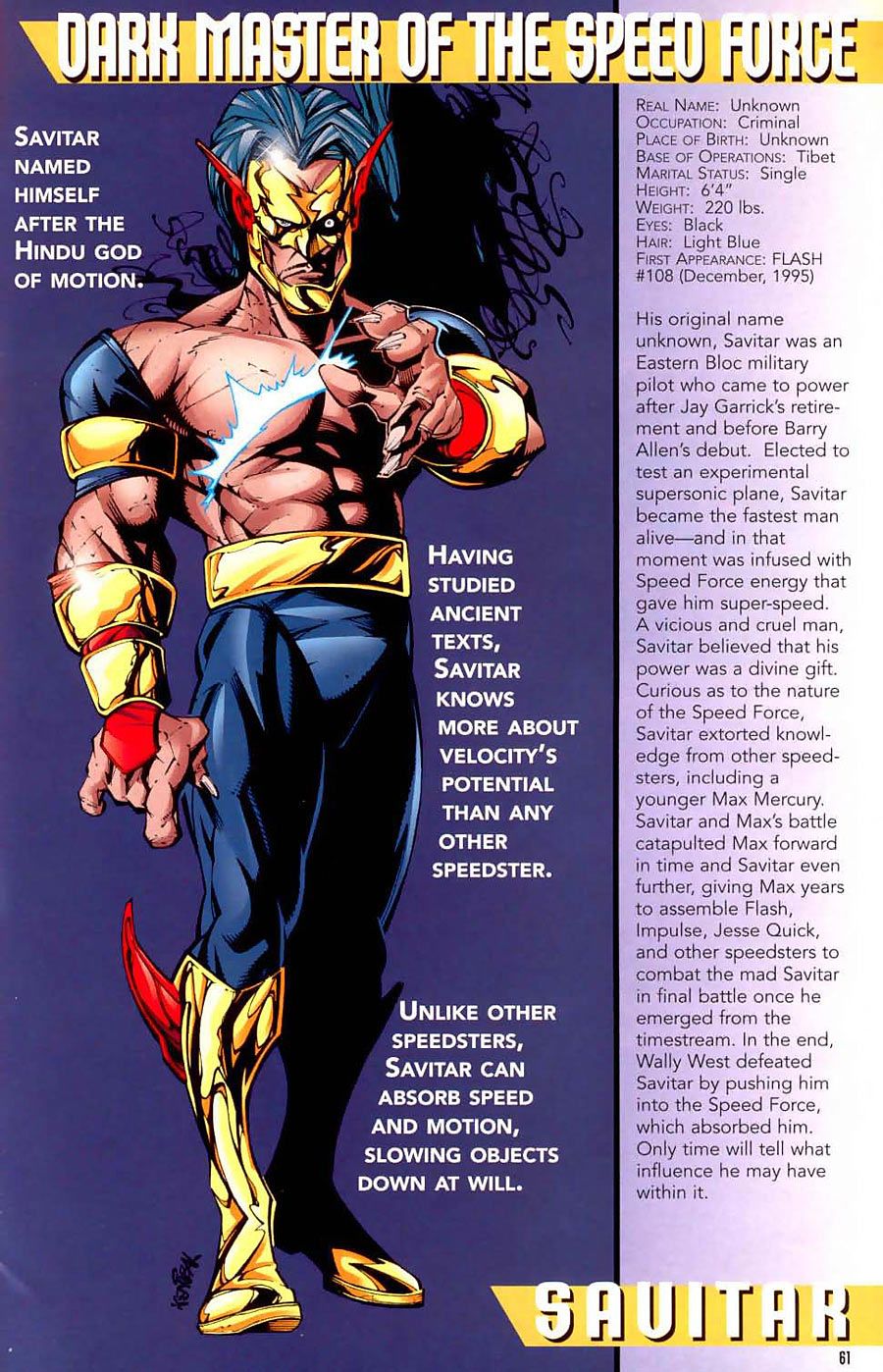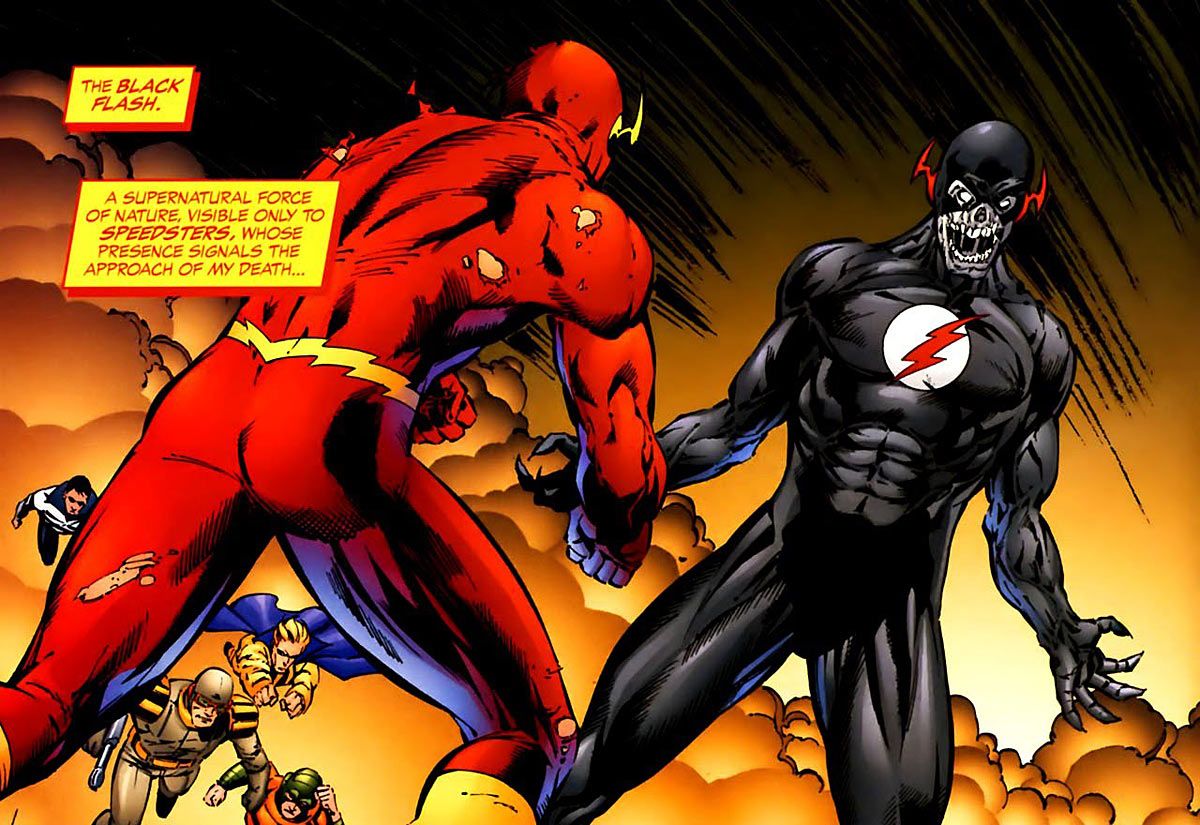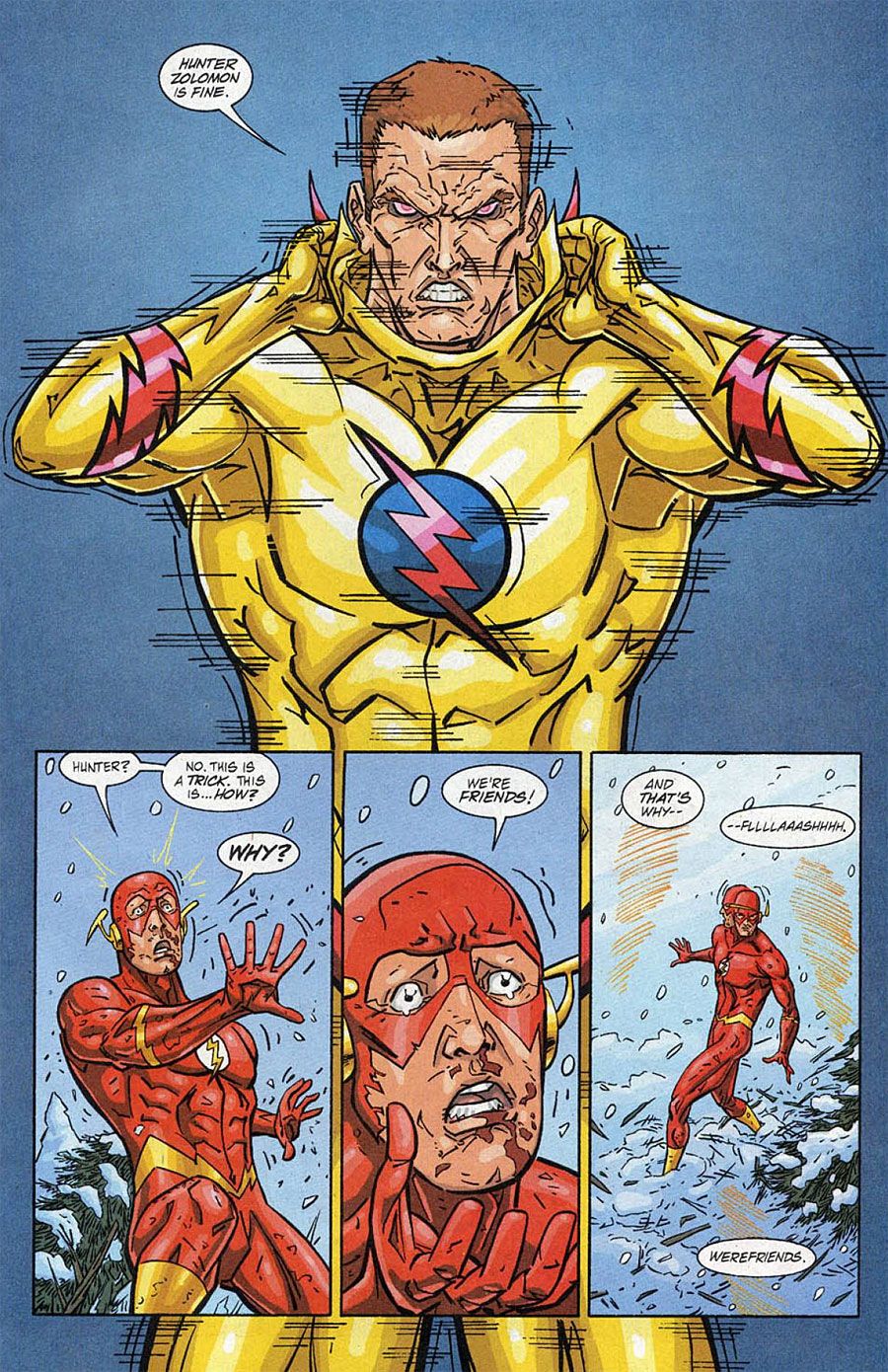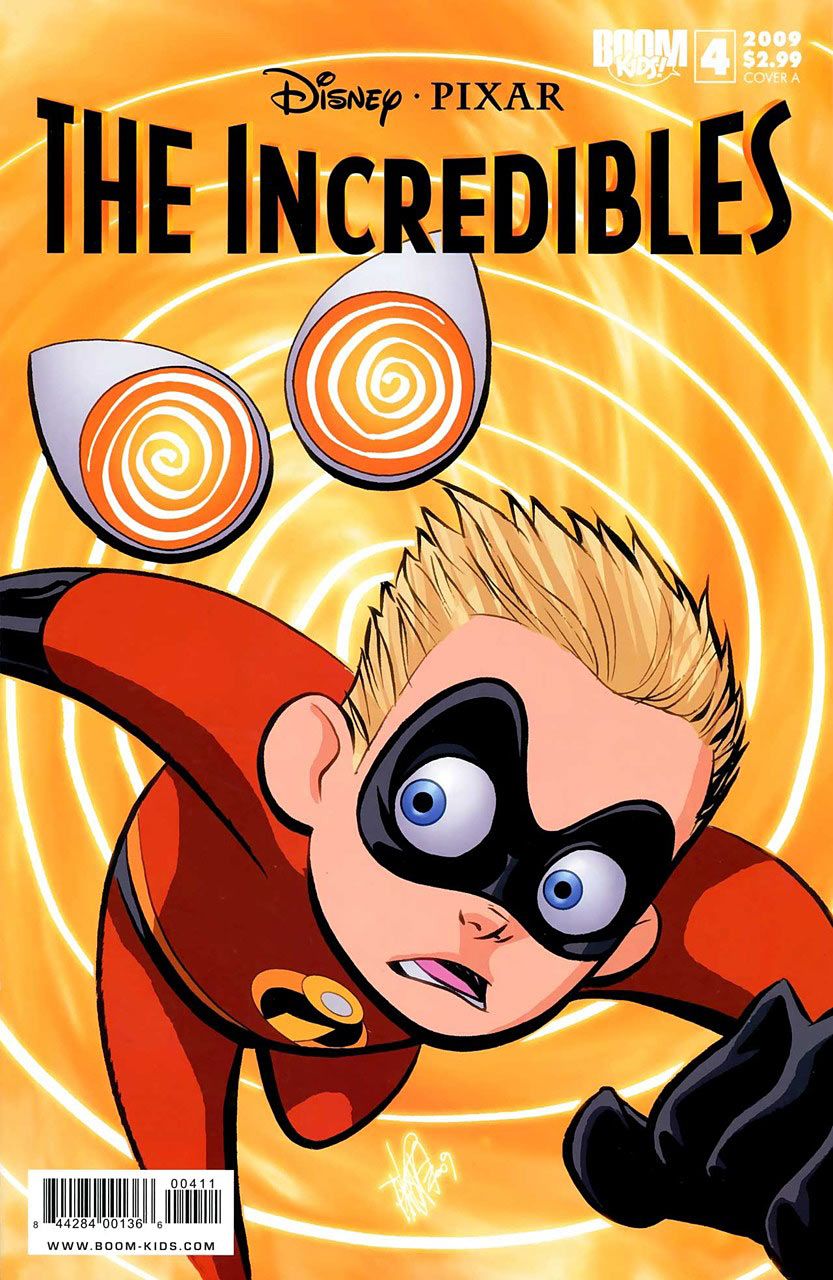Everyone wishes they had more time in the day. Short of slowing down time, your only real option is to move faster, but being human still has its limits. Being super human, able to move faster than the average person, would give you a distinct advantage no matter your goals. Today, super speed is one of the most popular super powers in the world. Between DC's "The Flash" television series on the CW and Marvel's Quicksilver appearing in two different major movie franchises at two different studios (and played by two different actors), speedsters are the super hero du jour. But speedsters are nothing new, especially when it comes to comic books.
RELATED: 7 More Speedsters "The Flash" Should Let Run Wild
Fictional heroes with super speed stretch back to Greek and Roman myth, but it's in comics where a metric ton of lightning fast heroes have thrilled readers from the Golden Age to the Modern Age. Beginning with the original Flash, Jay Garrick, so many great speedsters of all shapes and sizes have broken the speed barrier and thrilled readers from multiple generations. We know your time is limited, but slow down and enjoy a look back at the heroes and villains who have raced from the four-color page and into the stuff of super hero legend.
The Flash - Jay Garrick
(DC Comics)
First appearance: "Flash Comics" #1 (January 1940)
Created by Gardner Fox and Harry Lampert
The speedster that started the comic book super speed bond, Jay Garrick raced into fans' hearts in 1940. Garrick received his super speed powers after being exposed to radioactive hard water. It's hard to imagine that Garrick's greatest contribution to comic book history would occur years after his debut in the pages of "The Flash" #123 (Sept. 1961) when Garrick met the contemporary Flash, Barry Allen. This legendary meeting forever linked the Golden Age of DC to the still forming Silver Age and these days, a whole new generation of fans are getting to know Garrick on the second season of CW's "The Flash."
Silver Streak
(Lev Gleason Publications)
First appearance: "Silver Streak Comics" #3 (1940)
Created by Joe Simon and Jack Binder
Published just two months after the debut of the original Flash, Silver Streak enjoyed a long career as comics' second speedster, but his origin is far crazier. An unnamed taxi driver was hypnotized by a swami into becoming a race car driver, but when the driver was killed, the swami resurrected him with a formula that granted the dead driver super speed. As the Silver Streak, this former hack fought crime, Nazis and all matter of strangeness.
Max Mercury/Quicksilver/Ahwehota/Windrunner/Whip Whirlwind/ Lightning/Bluestreak/Buckshot/The Zen Master of Speed
(Quality Comics)
First appearance as Quicksilver: "National Comics" # 5 (1940); as Max Mercury: "Flash" #76 (1993)
Created by Jack Cole and Chuck Mazoujian
The original comic book Quicksilver, this classic speedster was created for Quality Comics (which was later purchased by DC). Quicksilver was never given a proper origin until 1993 when Mark Waid revived the character during his legendary "Flash" run. Waid changed the character's name to Max Mercury and revealed that this early comic book speedster has long raced through time, taking many different names and serving the Speed Force, a quasi-mystical field of sentient locomotion that grants its power to certain wielders throughout history. Max Mercury became DC's Speed Force Yoda and mentored multiple generations of speedsters on how to properly wield their power.
Mercury
(Marvel Comics)
First appearance: "Red Raven Comics" #1 (1940)
Created by Jack Kirby and Martin A. Bursten
Marvel's Mercury only had one Golden Age appearance, but was the first of many Marvel attempts to establish a proper speedster. Mercury can also be seen as establishing the Marvel tradition of mythological gods in the world of men. Later, it would be revealed that Mercury had ties to another Kirby character, one who wouldn't appear for over thirty years.
Hurricane
(Marvel Comics)
First appearance "Captain America Comics" #1 (1941)
Created by Joe Simon and Jack Kirby
Marvel's second speedster, the Hurricane wore a Hermes-like head piece and was created by two true legends also responsible for Captain America, Joe Simon and Jack Kirby. The Hurricane didn't make a major impact on the Golden Age of Marvel and only appeared a handful of times, but he too shared ties to another Kirby character with serious staying power.
Whizzer (Golden Age)
(Marvel Comics)
First appearance: "USA Comics" #1 (1941)
Created by Al Avison
Marvel's strangest speedster, the Whizzer received his powers not by being struck by lightning or being exposed to strange chemicals -- no, the Whizzer, real name Robert Frank, received his powers after a transfusion of mongoose blood. Early in his career, the Whizzer even wore a Mongoose head on his own helmet. Despite all that silliness, the Whizzer was actually a very important Golden Age Marvel character and was the first speedster to find success at Marvel. A founding member of the All-Winners Squad (Marvel's first super team) and the Invaders, he fought the Nazi menace alongside Captain America and the Sub-Mariner, and married fellow Golden Age hero Miss America. For a time, it was even believed that the super duo were the parents of Quicksilver (another speedster) and the Scarlet Witch, though this would eventually prove to be false.
Johnny Quick
(DC Comics)
First appearance: "More Fun Comics" # 71 (1941)
Created by Mort Weisinger
DC's other Golden Age speedster, Johnny Quick never gained the popularity of Jay Garrick, but he still enjoyed a long publishing career. Cameraman Johnny Chambers gained his speed powers when he recited a formula, 3X2(9YZ)4A. With this formula, Quick sped into many adventures and enjoyed a longer publishing career than most of his Golden Age contemporaries. It was in the '80s when Johnny Quick experienced his height of creative popularity. In the pages of "All-Star Squadron," a whole new generation of readers was able to thrill to Quick's fast paced crime smashing antics.
Rival
(DC Comics)
First Appearance: "Flash Comics" #104 (1949)
Created by John Broome and Joe Kubert
There is a long history of heroic speedsters in comics, but there is also a long history of the dark shadows of those speedsters. This history began with Rival, a dark version of Jay Garrick. Edward Clariss thought he would be able to replicate the accident that caused Jay Garrick to become the Flash, instead, the bitter university professor transformed himself into the first dark speedster in comics.
Speedy Gonzales
(Dell Comics)
First comic book appearance: "Looney Tunes" #16 (1955)
Created by Friz Freleng and Hawley Pratt
The Fastest Mouse in All of Mexico made his comic book debut in 1955 and has his own place in the legacy of comic book speedsters. He may not be fighting Captain Cold or Gorilla Grodd, but Speedy has been stealing cheese from nasty cats to feed the hungry mice of Mexico for generations.
The Flash - Barry Allen
(DC Comics)
First appearance: "Showcase" #4 (1956)
Created by Robert Kanigher and Carmine Infantino
When Allen raced onto newsstands in 1956, a whole world of villains and heroes came with him. These same characters are now all being explored on CW's hit "The Flash," and it all began with Allen's first appearance. Even more important, Barry Allen ushered in the Silver Age of comics and the super hero revival that came with it. Before he donned a costume as the Flash, Barry was a police scientist who was struck by lightning and bathed in chemicals that resulted in him becoming the fastest man alive. After the chemical bath, Barry would go on to become a founding member of the Justice League, the long running star of his own feature and a TV star in two decades. There's also a feature film in the works starring Ezra Miller as Barry Allen.
Lightning
(Tower Comics)
First appearance: "T.H.U.N.D.E.R. Agents" #7 (1966)
Created by Bill Pearson and John Guinta
T.H.U.N.D.E.R. Agents is possibly the coolest non-DC or Marvel team in comic book history. Created by the immortal Wally Wood, the Higher United Nations Defense Enforcement Reserves were published by a number of different companies, usually garnering critical love. Of course, the Agents had a speedster of their very own in Lightning. Lightning's real name was Guy Gilbert, a hero who gained his super speed from his experimental suit. Sadly, any time Gilbert tapped into his suit, it would shorten his life. But Gilbert bravely raced into action anytime he was needed, proving he was one of the most selfless and swiftest heroes in comics.
Kid Flash/The Flash - Wally West
(DC Comics)
First appearance as Kid Flash: "The Flash" #110 (1959); as Flash: "Crisis on Infinite Earths" #12 (1986)
Created by John Broome and Carmine Infantino
Wally was first introduced as the Flash's sidekick, Kid Flash, in 1959. From there, he appeared in countless Flash adventures and solo features. Wally was a founding member of the legendary Teen Titans and on this beloved team, fans witnessed Wally West grow up and develop into his own man. When Barry Allen tragically sacrificed himself for the greater good in DC's "Crisis on Infinite Earths," Wally took up the Flash mantle and arguably became the greatest hero to wear the red and yellow.
Professor Zoom, AKA the Reverse-Flash
(DC Comics)
First appearance: "The Flash" #139 (1963)
Created by John Broome and Carmine Infantino
Fans of CW's "The Flash" are very familiar with Eobard Thawne, the Reverse Flash. In the comics, Thawne is pretty much the same vile abuser of the Speed Force as on TV, except that the comic Thawne never ran afoul of Harrison Wells. In fact, the comic book Thawne, who also goes by the name Professor Zoom, even committed the ultimate act of speedster depravity by murdering the love of Barry Allen's life, Iris West Allen. Everything about the evil speedster profanes the Flash legacy as he remains one of the greatest threats the DC Universe and the Flash ever faced.
Johnny Quick (Crime Syndicate)
(DC Comics)
First appearance: "Justice League of America" #29 (1964)
Created by Gardner Fox and Mike Sekowsky
The Crime Syndicate of America on Earth-3 was one of the greatest threats the Justice League of America opposed in the Silver Age. One of the Syndicate's most prominent members was this evil speedster and the antithesis of the legacy of two classic heroes. Johnny Quick has one of the coolest Silver Age costumes and has followed the Crime Syndicate in all its incarnations throughout the decades.
Quicksilver
(Marvel Comics)
First appearance: "X-Men" #4 (March 1964)
Created by Stan Lee and Jack Kirby
First introduced as a foe to the X-Men, Pietro Maximoff soon became an Avenger and atoned for his evil past. Quicksilver is truly Marvel's greatest speedster and in the past two years two different versions of the character appeared in Fox's "X-Men: Days of Future Past" and Marvel's "Avengers: Age of Ultron." If that's not enough to solidify this lightning fast champion as one of the most complex and fascinating speedsters ever to appear in comics, maybe his current role on the "Uncanny Avengers" will.
The Tornado Twins
(DC Comics)
First appearance: "Adventure Comics" #373 (1968)
Created by Jim Shooter, Mort Weisinger and Win Mortimer
Donald "Don" Wallace Allen and Dawn Jae Allen are the 30th Century descendants of Barry Allen. On Flash Day, a special holiday honoring the Scarlet Speedster, the duo temporarily gain speed powers and help those beloved heroes of the future, the Legion of Super-Heroes. Donald went on to father Bart Allen while Dawn became the mother of the female speedster XS. Even though the twins' heroic career didn't last long, through Bart and XS, the twins ensured the continuation of the Flash legacy. That legacy continued with Jai and Iris West, the twin children of Wally West, who took the name the Tornado Twins when they began to manifest speed powers of their own.
Whizzer (Squadron Supreme)
(Marvel Comics)
First appearance: "The Avengers" #69 (1969)
Created by Roy Thomas and John Buscema
The Squadron Supreme (or Sinister) was made up of Justice League analogs and first went up against the Avengers in the waning days of the 1960s. Of course, any Justice needs a Flash and Marvel reached deep into its history to pull out the Whizzer to serve as the Squadron's resident speedster. This Whizzer was as evil as he was fast, and has appeared in numerous iterations of Squadron Supreme.
Fastbak
(DC Comics)
First Appearance: "The New Gods" #5 (1971)
Created by Jack Kirby
Every good pantheon of gods needs a speedster, and Fastbak fills that role for Kirby's New Gods. The young and brash Fastbak uses his specially designed Aero-pads to reach speeds even the gods envy. Fastbak's wonderfully designed costume and freewheeling nature make him a delightful part of the world "King" Kirby created when he arrived at DC Comics.
Makkari
(Marvel Comics)
First appearance: "Eternals" #1 (1976)
Created by Jack Kirby
When Jack Kirby took his myth building brilliance back to Marvel, his newest creation, the Eternals, received a speedster of their own in Makkari. Makkari is pure of heart and eager to battle any monstrous foe that would threaten his people or humanity. All that foreshadowing of Mercury and Hurricane's connection to a modern day Kirby character finally pay off, as the series revealed that Makkari was actually both of Kirby's Golden Age speedsters in disguise.
Spitfire
(Marvel Comics)
First appearance as Jacqueline Falsworth: "Invaders" #7 (1976); as Spitfire: " Invaders" #12 (1976)
Created by Roy Thomas and Frank Robbins
Another fascinating legacy speedster, the Invader known as Spitfire received her super speed powers from a fellow WWII era hero. When the synthetic blood of the original Human Torch infused her with super speed, Falsworth became the British champion known as Spitfire. Adding another wrinkle to Spitfire's legacy, the character is now, making her the second undead speedster on our list.
Speed Demon
(Marvel Comics)
First appearance: "Amazing Spider-Man" #222 (1981)
Created by Roy Thomas and Sal Buscema
When tracking the legacy of comic book speedsters, it's easy to find connections between them. After the original Squadron Sinister was defeated by the Avengers, the villain known as Whizzer went solo as the Spider-Man rogue, Speed Demon. Speed Demon was an also ran for years until he helped form the Sinister Foes of Spider-Man, finally becoming a fully realized and rather hilarious character in his own right.
Fastback
(DC Comics)
First appearance: "New Teen Titans" #16 (1982)
Created by Roy Thomas and Scott Shaw
What would an anthropomorphic animal version of the Justice League be without a speedster? The fleet footed hero representing the Zoo Crew, the gathering of animal champions led by Captain Carrot, was Fastback, a super fast turtle that gained his speed after exposure to a meteor. Just don't ask Captain Carrot who would win in a foot race between them.
Jesse Quick
(DC Comics)
First appearance: "Justice Society of America" #1 (1992)
Created by Len Strazewski and Mike Parobeck
The heroic legacy of the Golden Age Johnny Quick continued with Jesse Quick. Jesse gets her speed from the same formula as her father and has served as a partner of Wally West and as a member in good standing of the Justice Society of America. The saga of Jesse Quick continues on TV as CW's "The Flash" recently introduced the daughter of Earth 2's Harrison Wells, a young girl named Jesse who might just be the next hero to use the name Quick.
Sonic the Hedgehog
(Archie Comics)
First appearance in comics: "Sonic the Hedgehog" #1 (1992)
Created by Yuji Naka, Naoto Ohshima, Hirokazu Yasuhara
At first glance, Sonic the Hedgehog might seem out of place on this list, but Sonic's adventures have been published non-stop since 1992, making him the longest running video game character to ever appear in a comic series. Archie's "Sonic" is fraught with super speed adventure as this long running series has gained a fiercely dedicated following. This isn't just disposable cartoony puff either, "Sonic" features long form serialized storytelling that has pushed the Sega mascot to the next level of adventure.
Velocity
(Top Cow Productions)First appearance: "Cyberforce" #1 (1992)
Created by Marc Silvestri
When Marc Silvestri created Cyberforce, the writer/artist's team of cybernetically enhanced super soldiers had a speedster front and center. Young Velocity was Image Comics' first speedster and would soon become one of Cyberforce's most popular members, starring in two different miniseries and winning Top Cow's inaugural Pilot Season initiative. The character began her heroic career at 16, but as "Cyberforce" continued, Velocity matured as a hero and a character, allowing the super fast Carin Taylor to grow up right before fans' eyes.
Impulse/Kid Flash/The Flash - Bart Allen
(DC Comics)
First appearance as Impulse: "Flash" #92 (1994); as Kid Flash: "Teen Titans" Vol.3 #4 (2003); as Flash: "The Flash: The Fastest Man Alive" #1 (2006)
Created by Mark Waid and Mike Wieringo
A blood relative of Barry Allen, Bart is a speedster from the future. Sadly, Bart's super speed was killing him, necessitating his placement in a virtual reality world where he could use his speed with impunity until a cure was found. When Bart was shunted back in time, Wally West and the other speedsters of the modern era had to deal with a speedster who was raised believing that life is a video game. Impulse may have begun his heroic career as a Bugs Bunny-like pain in the butt, but by becoming a member of both the Teen Titans and Young Justice -- and even replacing West as the Flash for a stretch -- Bart became one of the greatest speedster heroes in DC history.
XS
(DC Comics)
First appearance" "Legionnaires" #0 (1994)
Created by Tom McCraw and Jeff Moy
We already established that the Allen Flash legacy continued far into the future with Impulse, but XS, speedster and member in good standing of the Legion of Super-Heroes also represents the Flash legacy that began with Jay Garrick. XS is the daughter of the Tornado Twins' Dawn Jae Allen and the cousin of Impulse. XS has raced back to the past to assist her speedster ancestors on a number of occasions and is living proof that even in the far future, super speed is awesome.
Savitar
(DC Comics)
First Appearance: "Flash" #108 (1995)
Created by Mark Waid and Oscar Jimenez
One of the most terrifying speedsters of any age, Savitar is the leader of a death cult that worships speed. Savitar imbued a group of ninjas with Speed Force energy and became one of the greatest threats Wally West ever faced. It took the combined might of all of DC's speedsters to stop the murder spree of this death-worshipping madman.
Black Flash
(DC Comics)
First appearance: "Flash" #138 (1998)
Created by Grant Morrison, Mark Millar and Ron Wagner
Possibly the inspiration for the incarnation of Zoom currently appearing on CW's "The Flash," the Black Flash has the chilling distinction of being the grim reaper of speedsters. It has been postulated that Death is too slow to catch beings that can tap into the Speed Force, so the universe created the Black Flash to reap speedsters when their time was up. The Black Flash has been on hand for the deaths of a number of famous DCU speedsters and is one of the most chilling super speed concepts ever conceived.
Zoom
(DC Comics)
First appearance as Hunter Zolomon: "The Flash: Secret Files & Origins" #3 (2001); as Zoom: "The Flash" #197 (2003)
Created by Geoff Johns and Scott Kolins
Barry Allen fought Eobard Thawne numerous times, but when the legacy of the Flash was passed down to Wally West, the jaundiced legacy of Zoom was passed as well. After Detective Hunter Zolomon was crippled by Gorilla Grodd, he begged West to go back in time to prevent the mauling, but the hero refused. Zolomon grew embittered, and through a series of chronal and Speed Force accidents became the villainous Zoom. Zoom became Wally West's greatest challenge and posed a major threat to every hero who was able to tap into the Speed Force.
Dash
(BOOM! Studios)
First comics appearance: "The Incredibles #1" (2009)
Created by Brad Bird
Was there ever a film sequence that underscored the joy of super speed better than Dash's run in "The Incredibles?" The youthful speedster's unadulterated glee at being able to outrace his enemies still resonates. In 2009, the joy came to comics as BOOM! Studios published a short-lived but acclaimed series of "Incredibles" comic books. These comics truly captured the spirit of Dash and also provided yet another example of why super speed and those that wield it have long been some of the most beloved heroes in comic history.
Who is the greatest speedster of all? Let us know in the comments!

